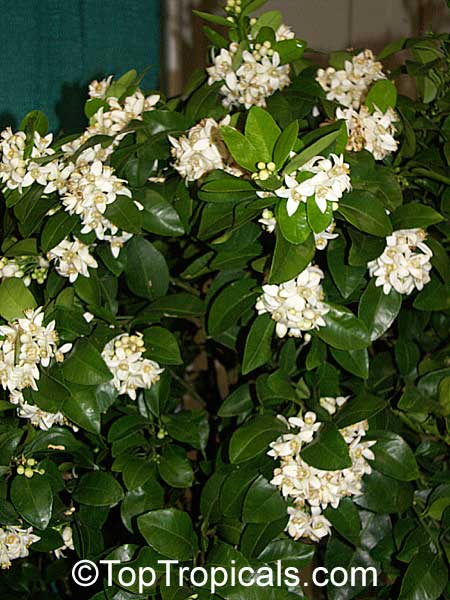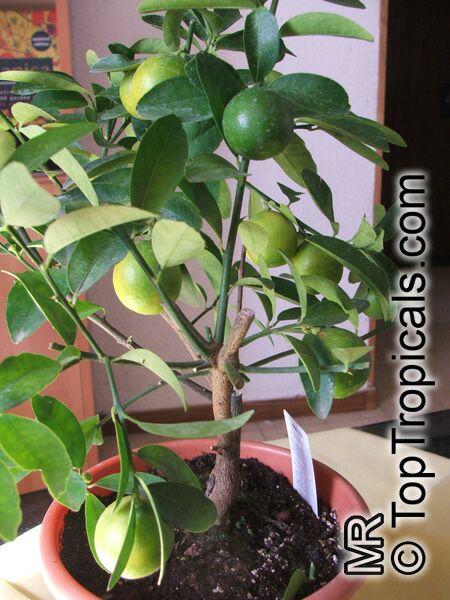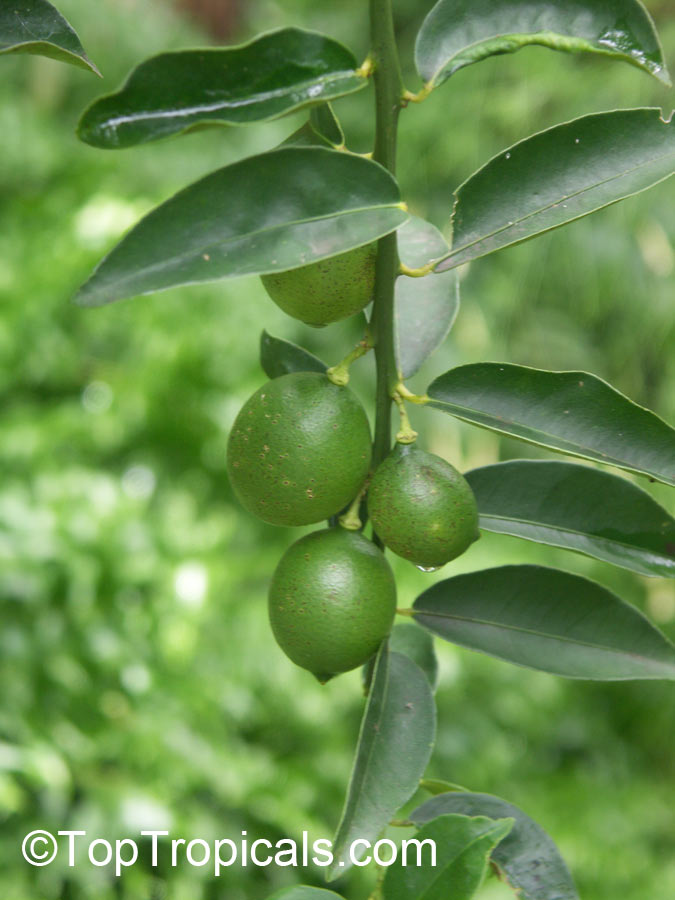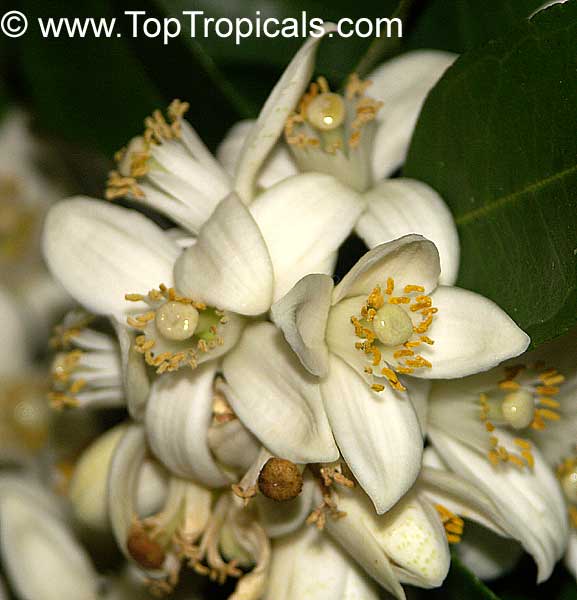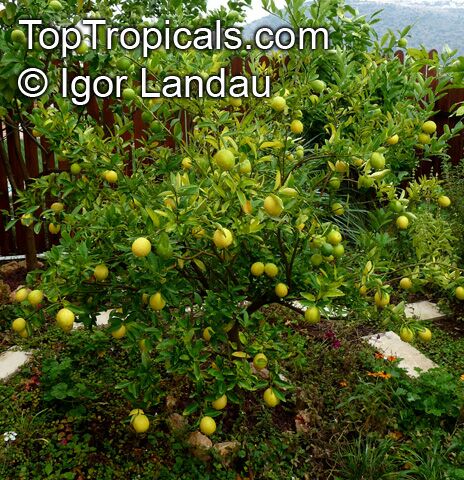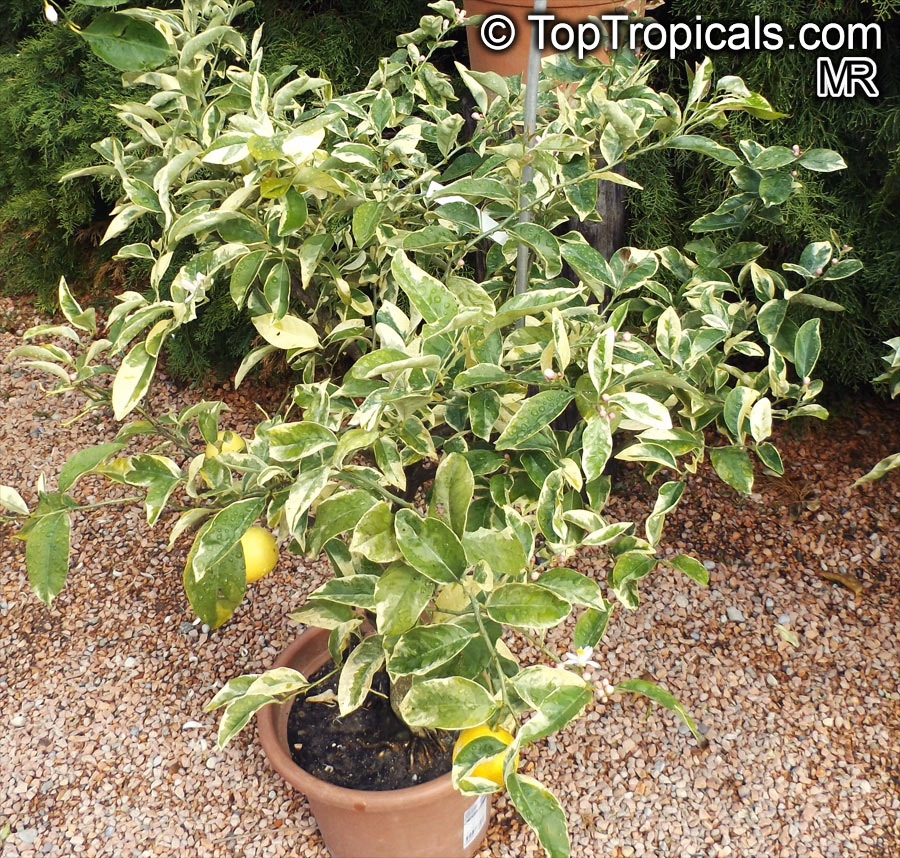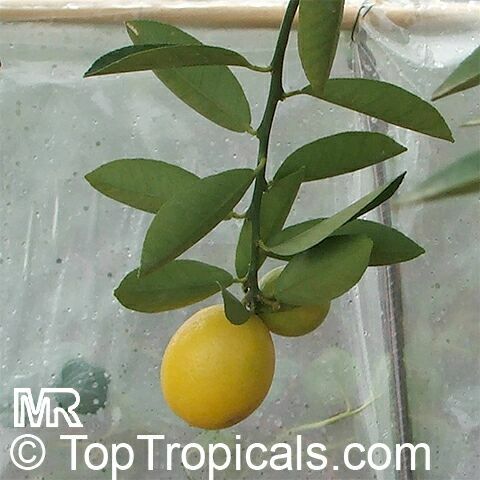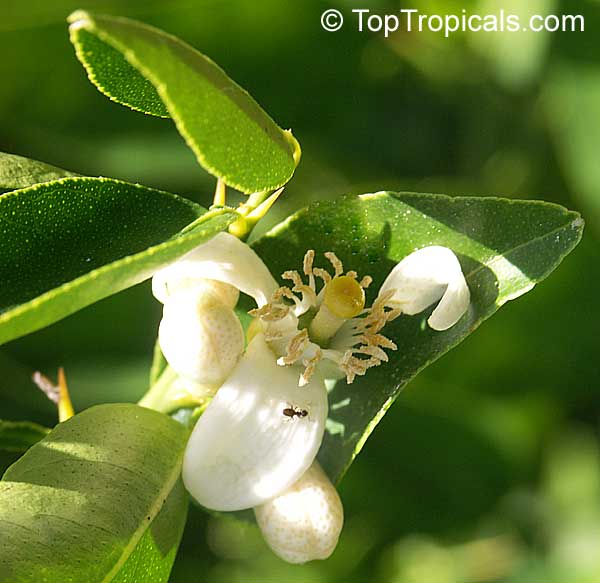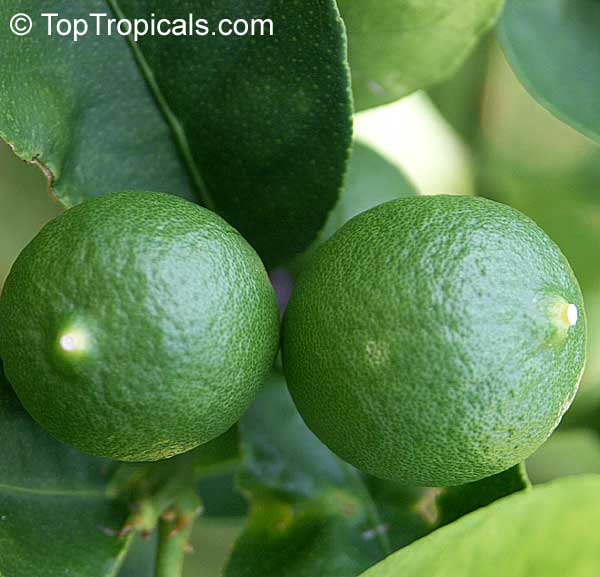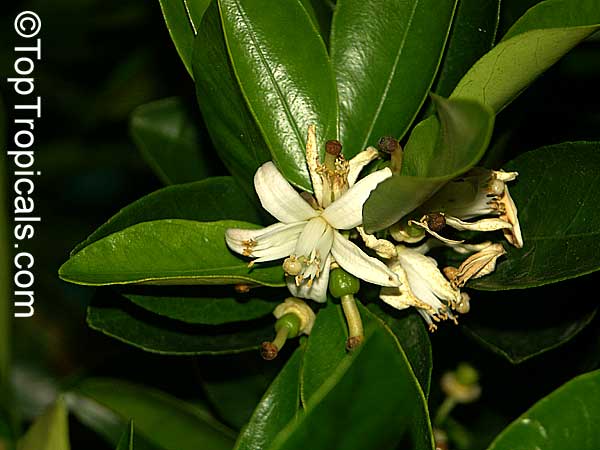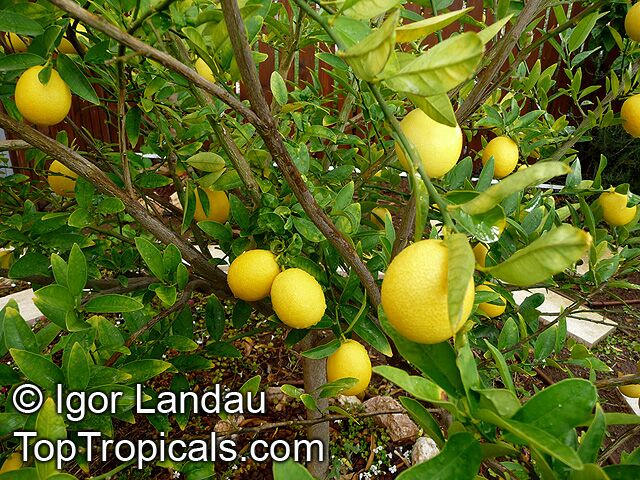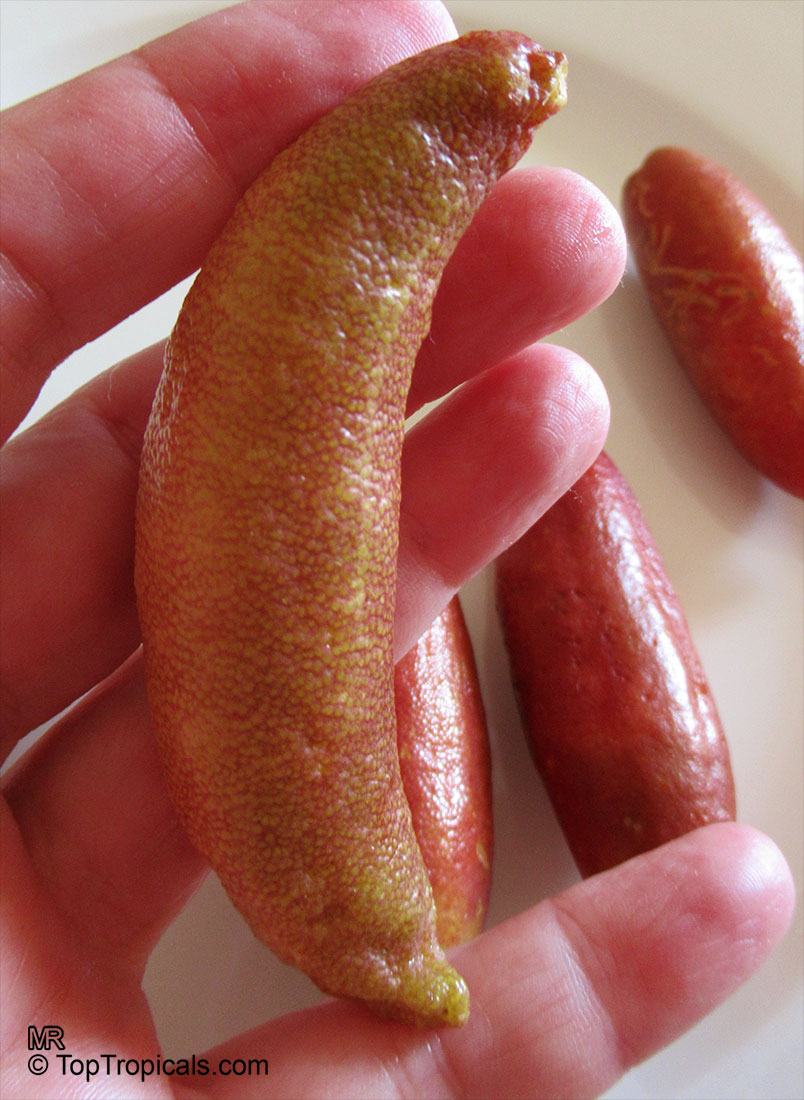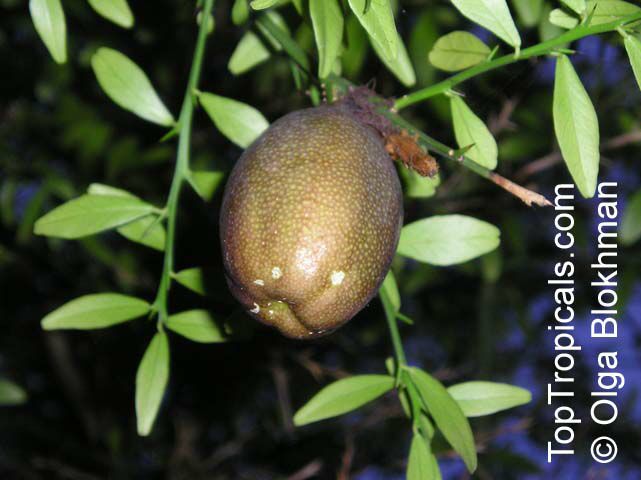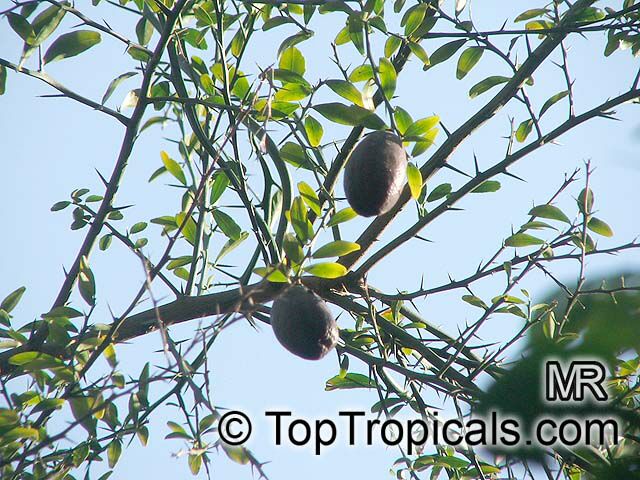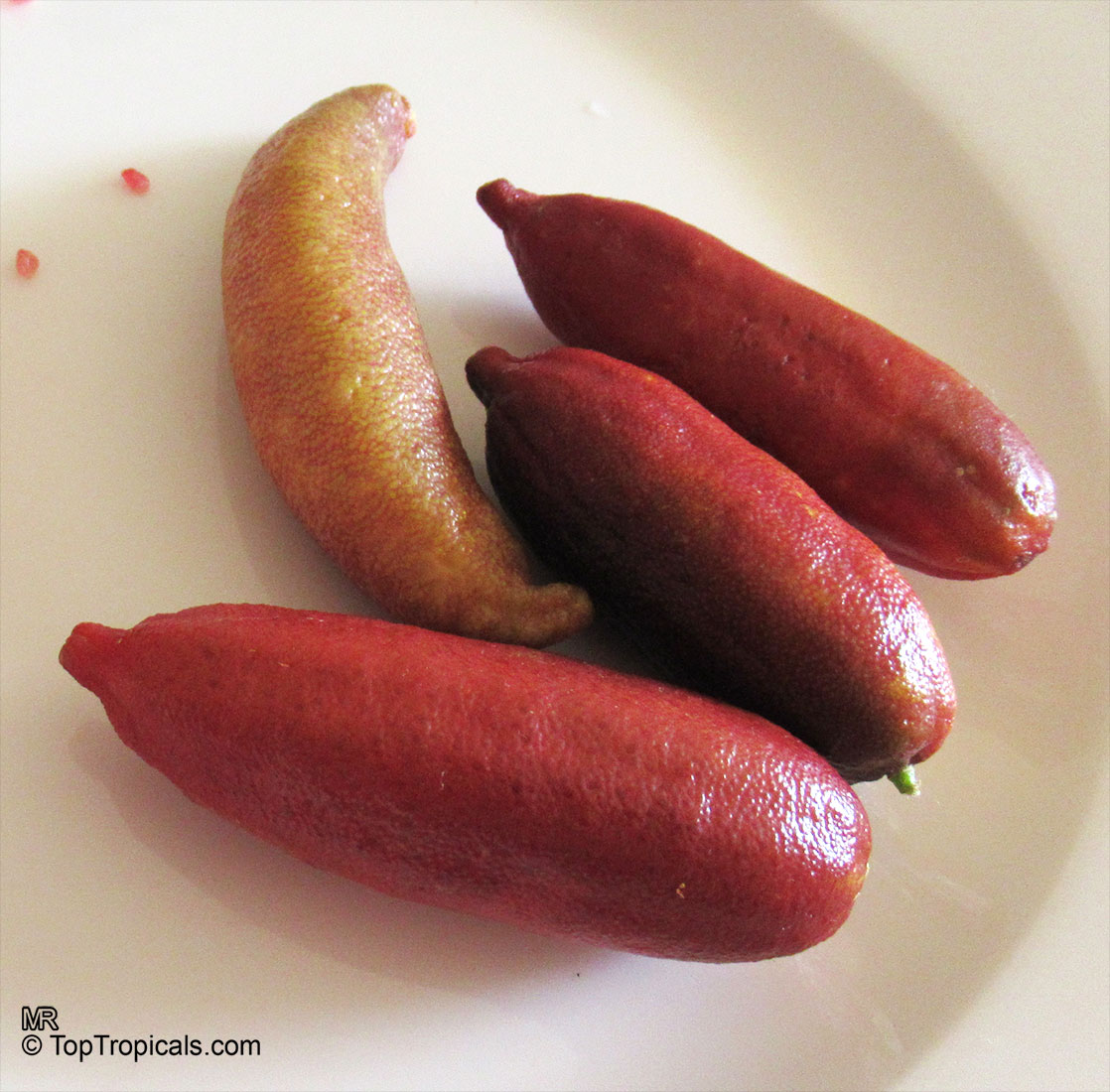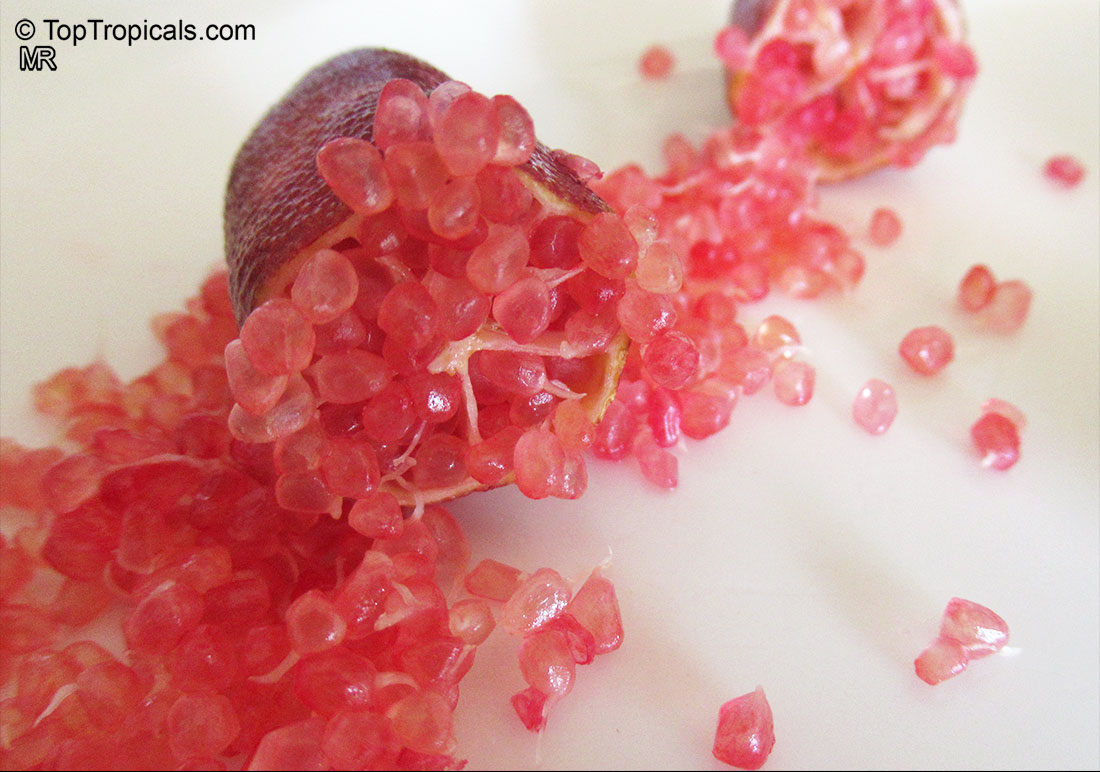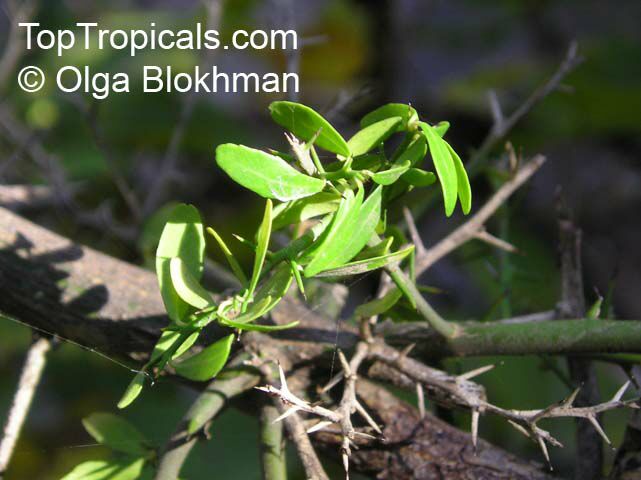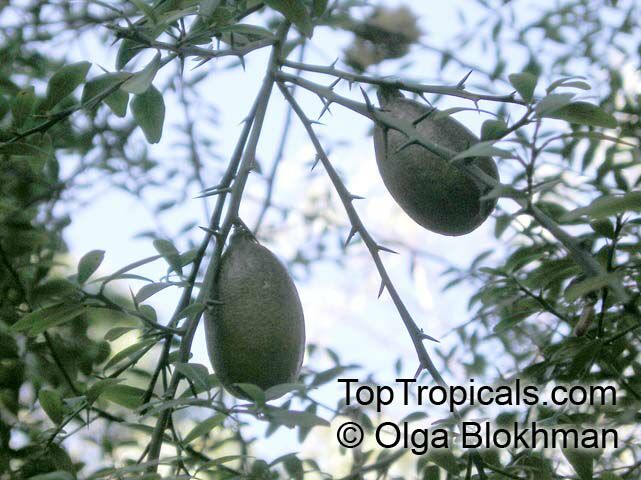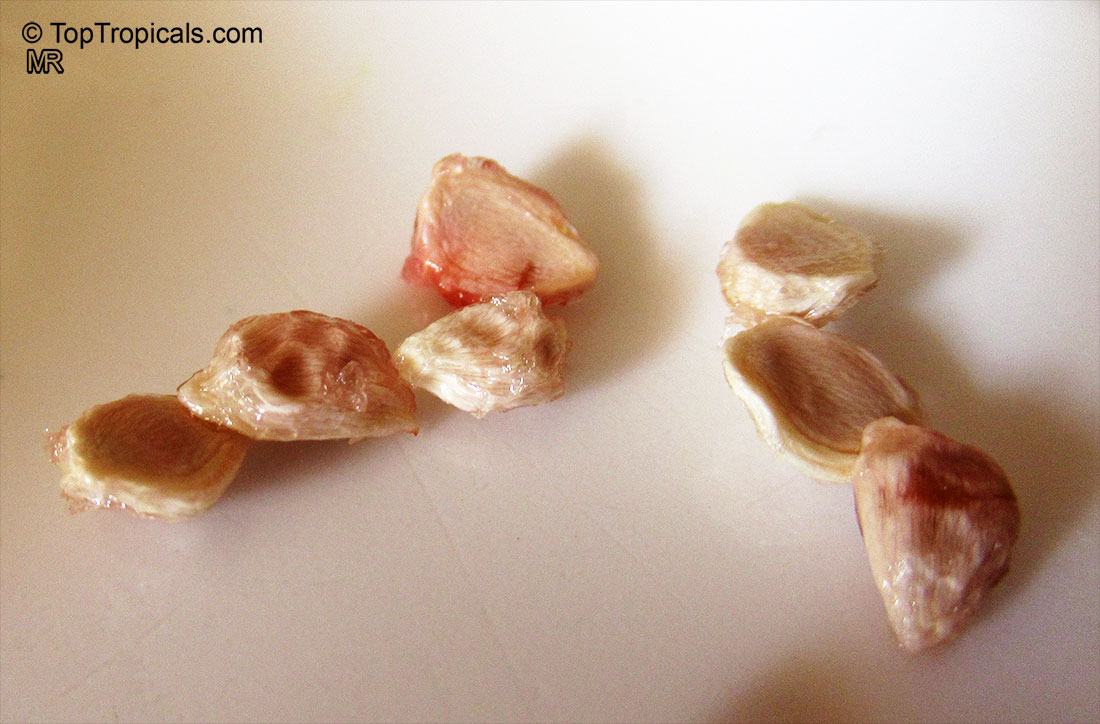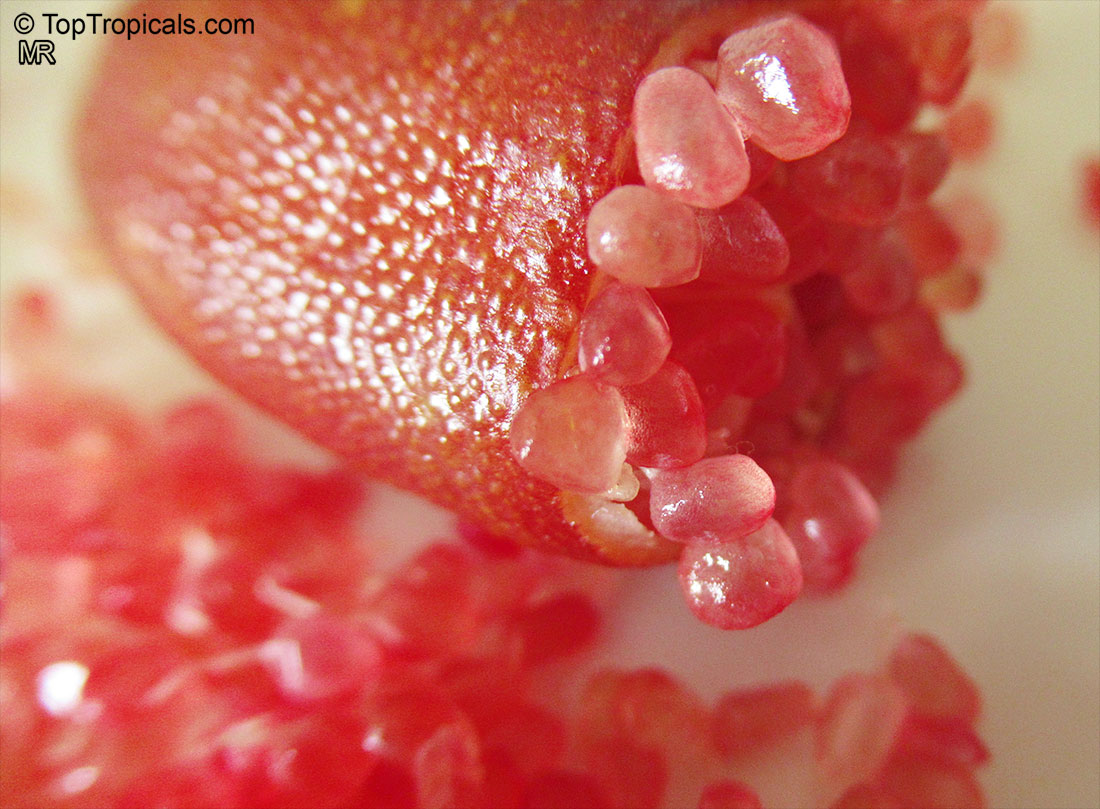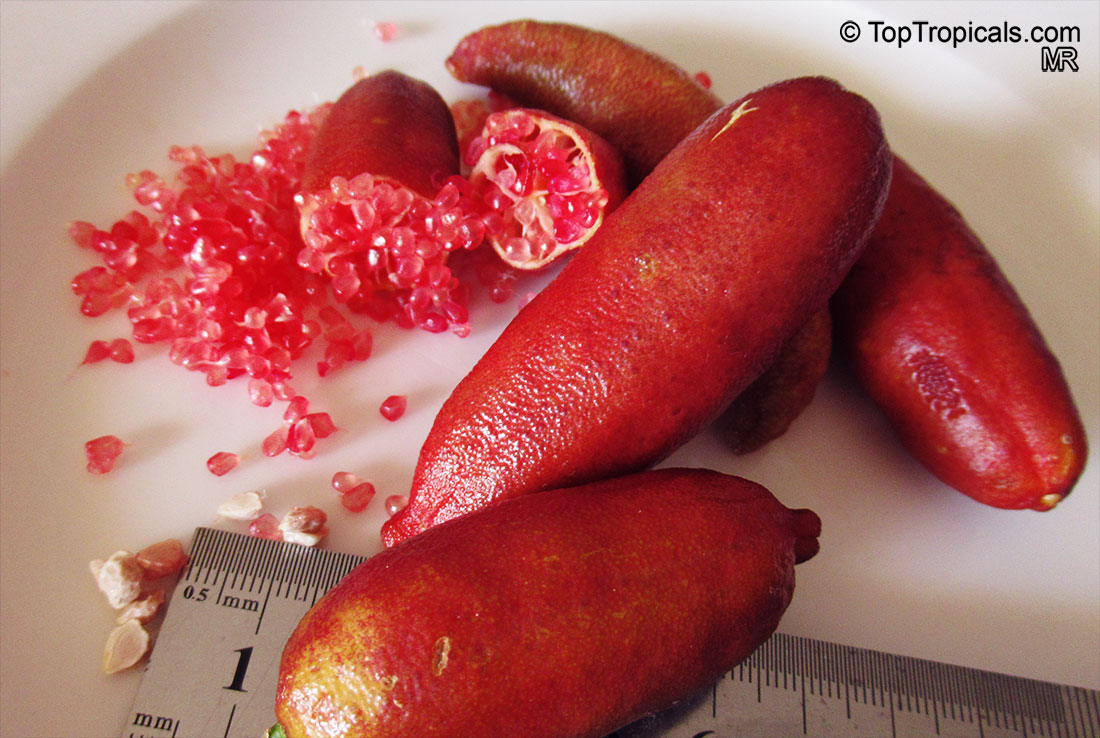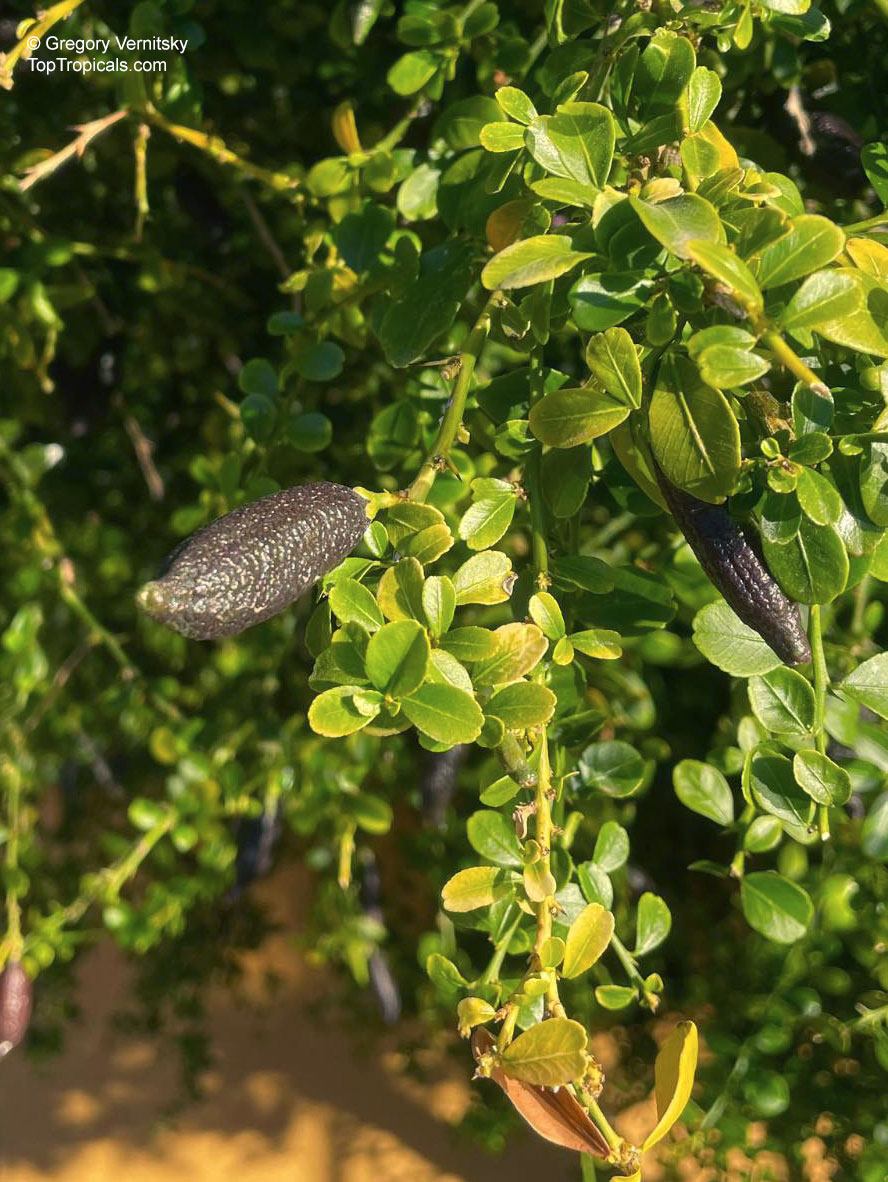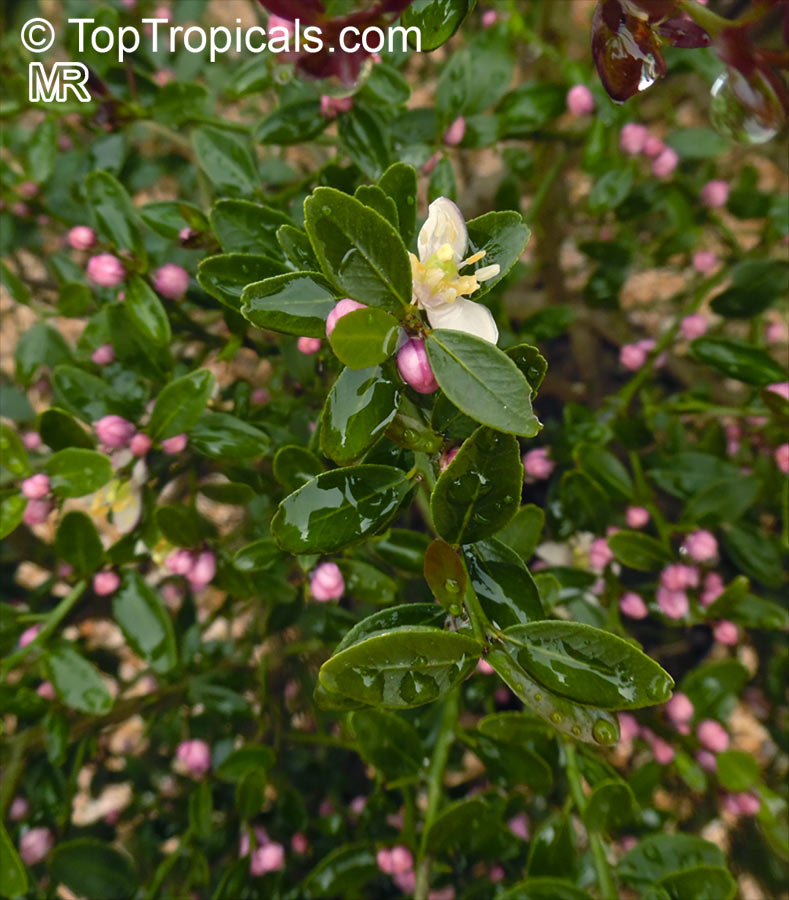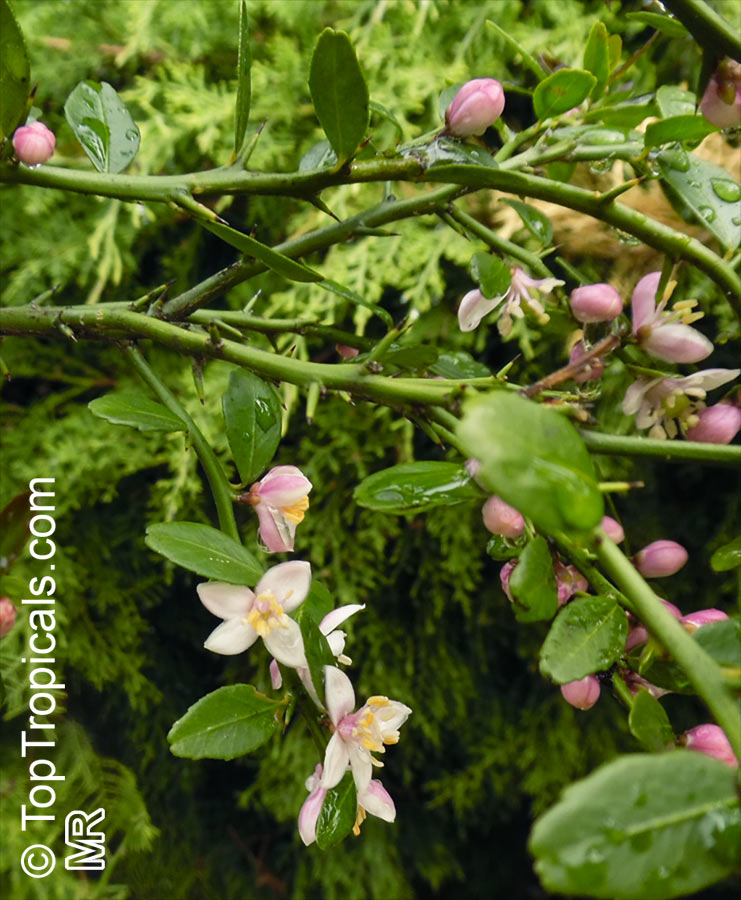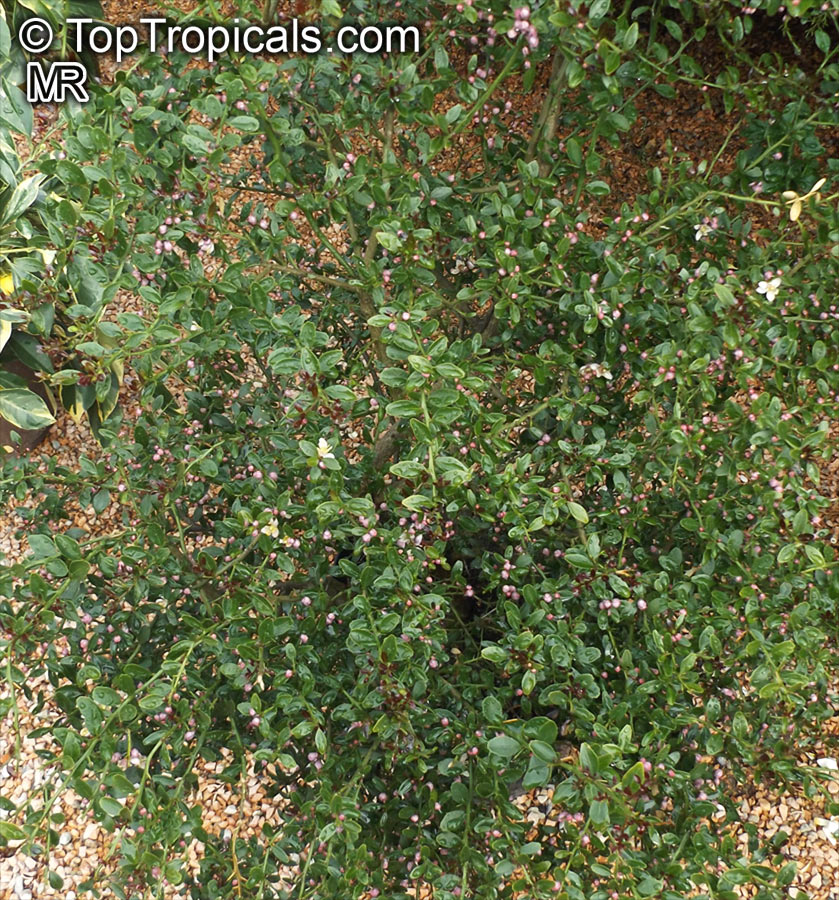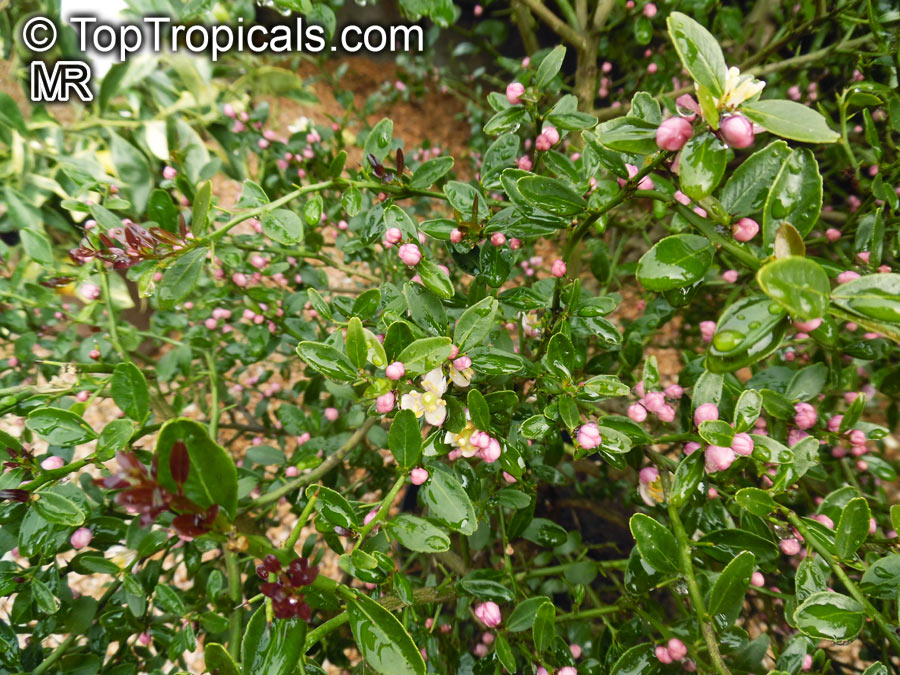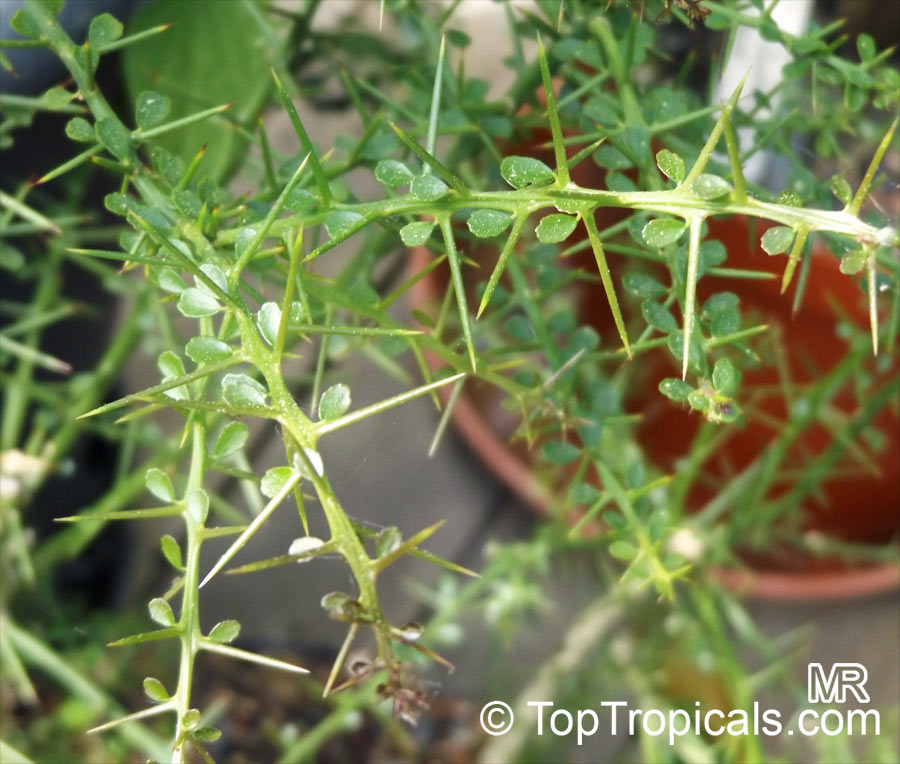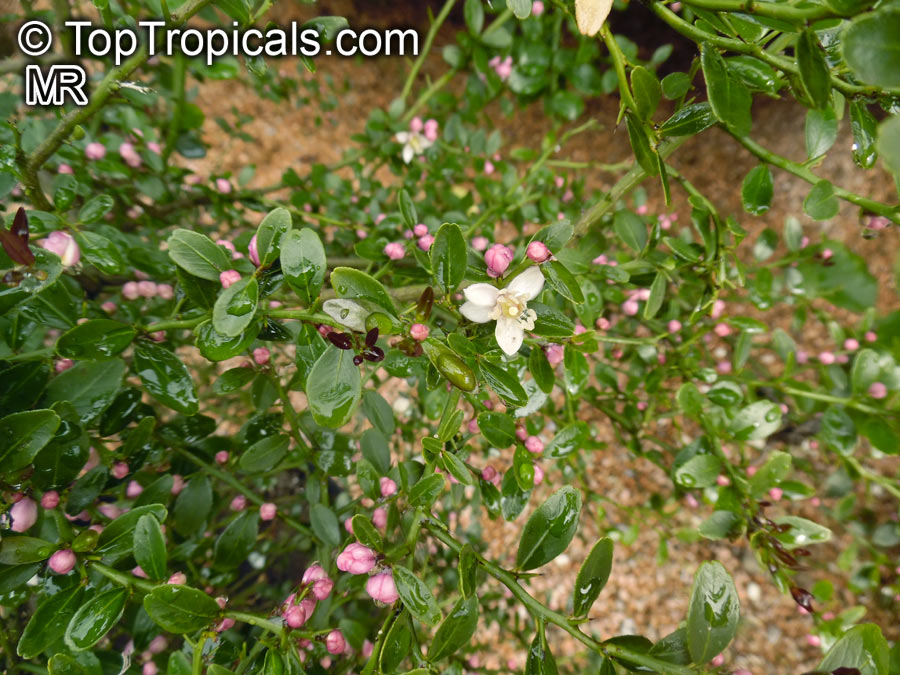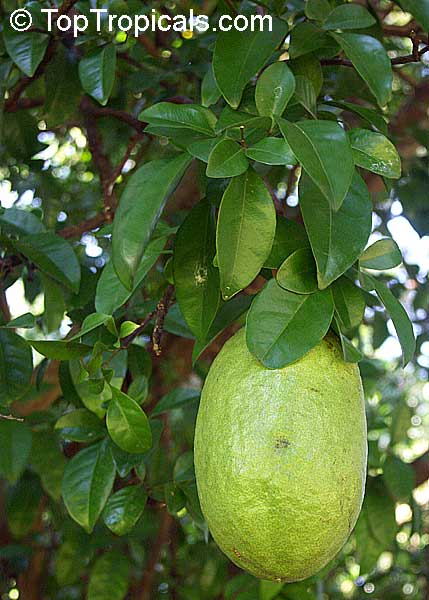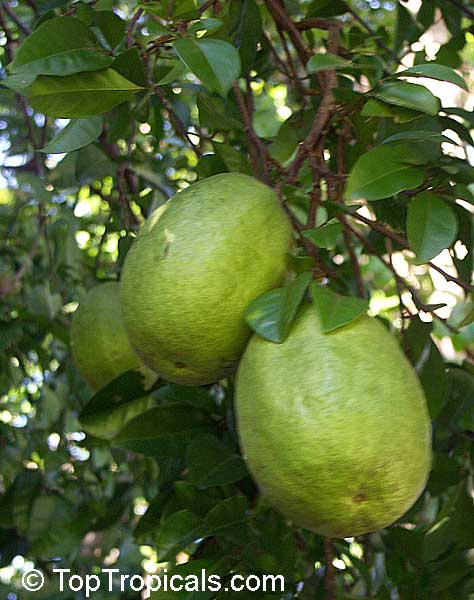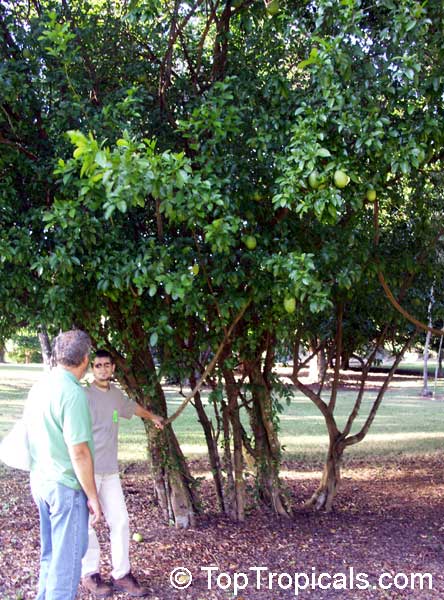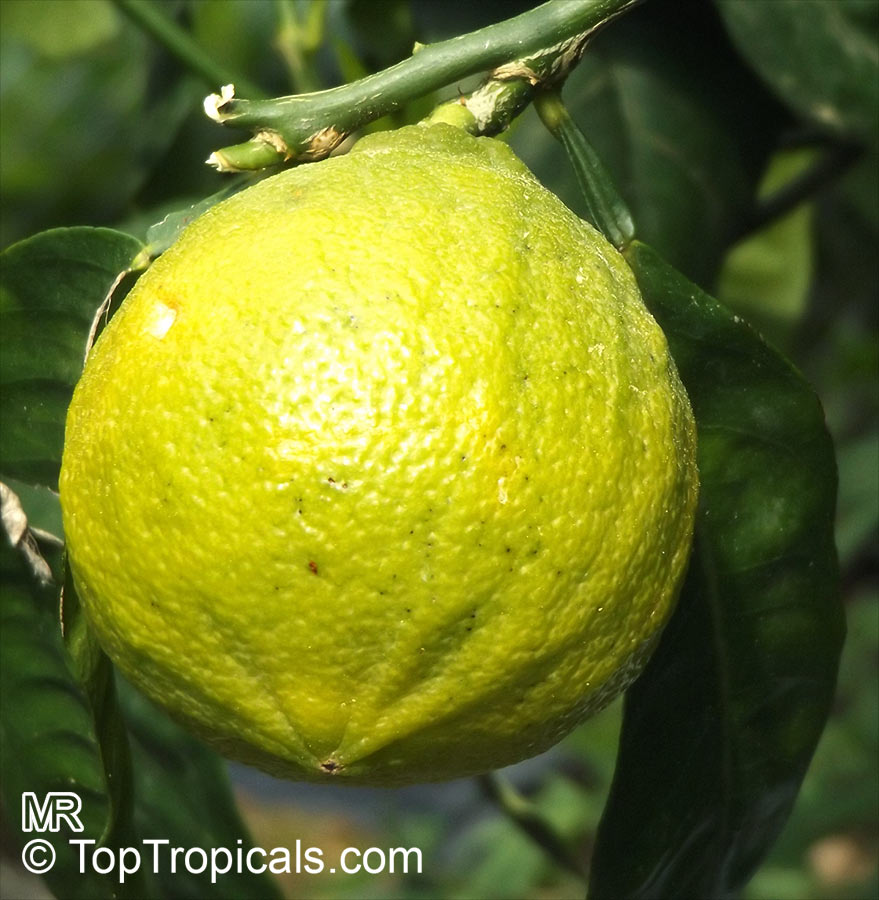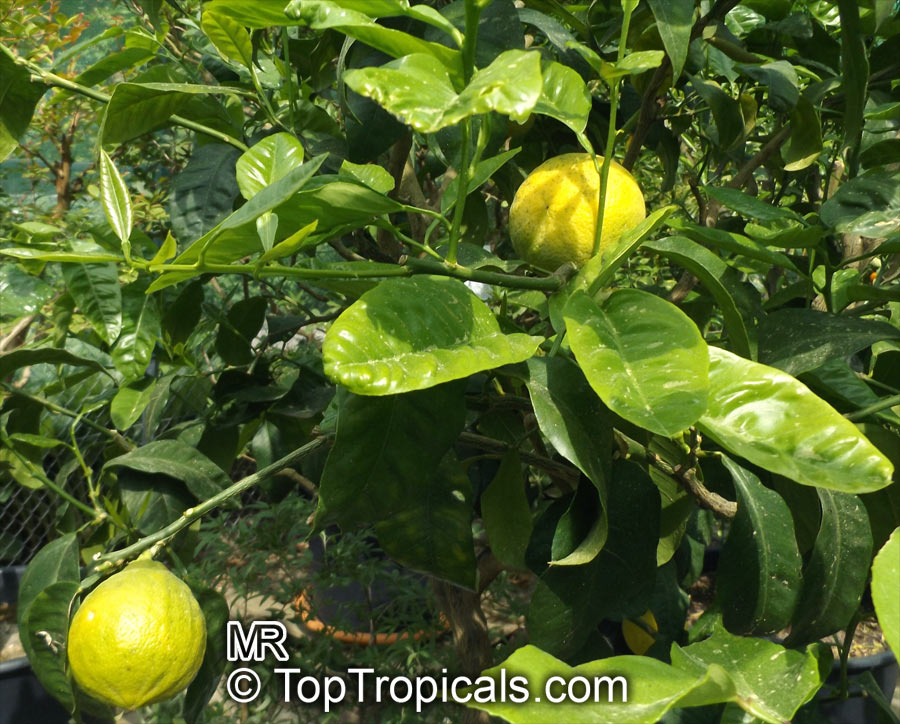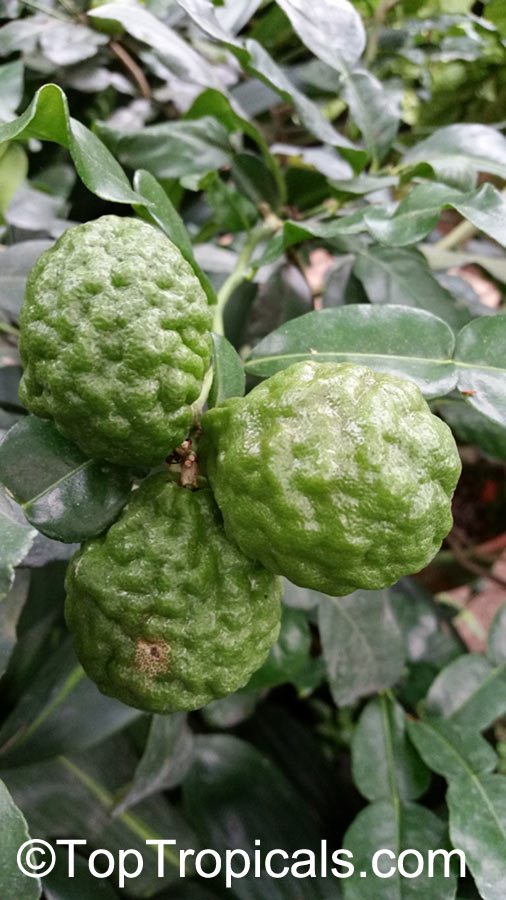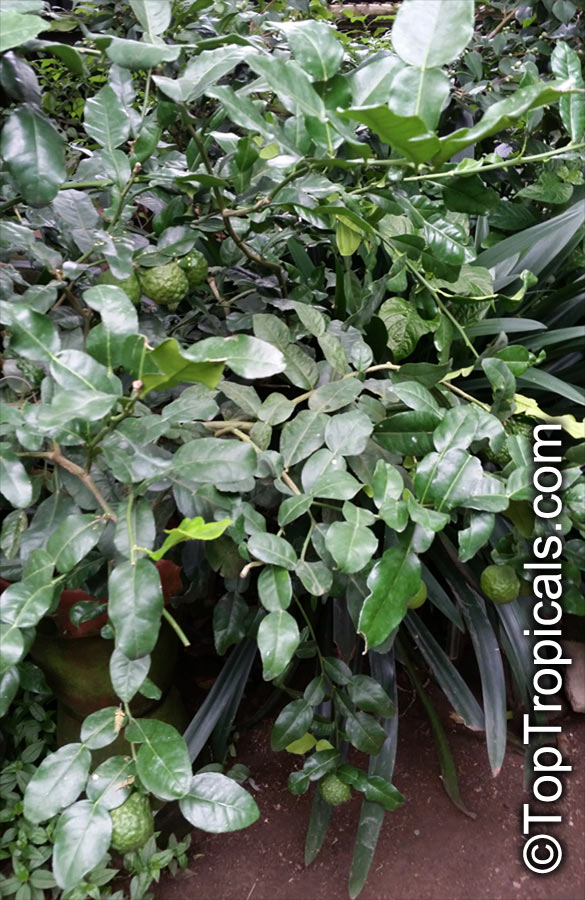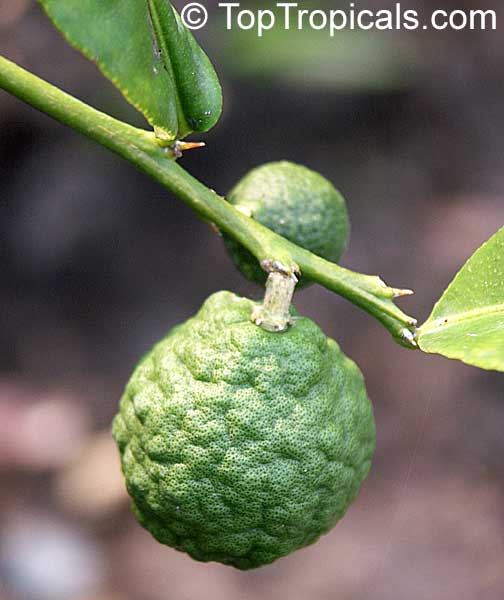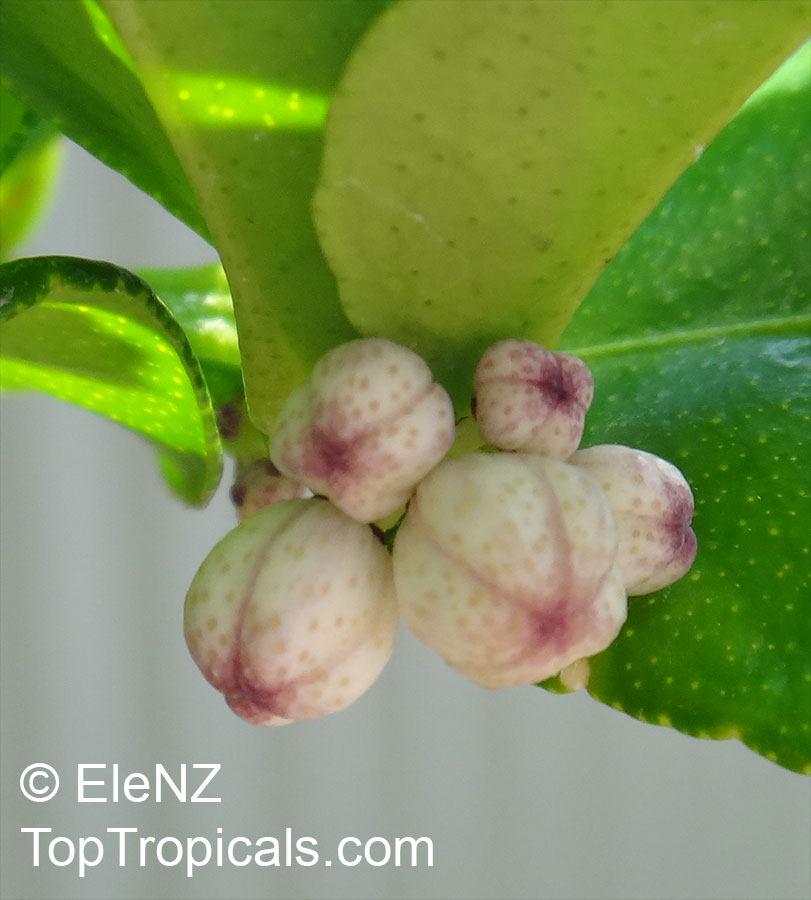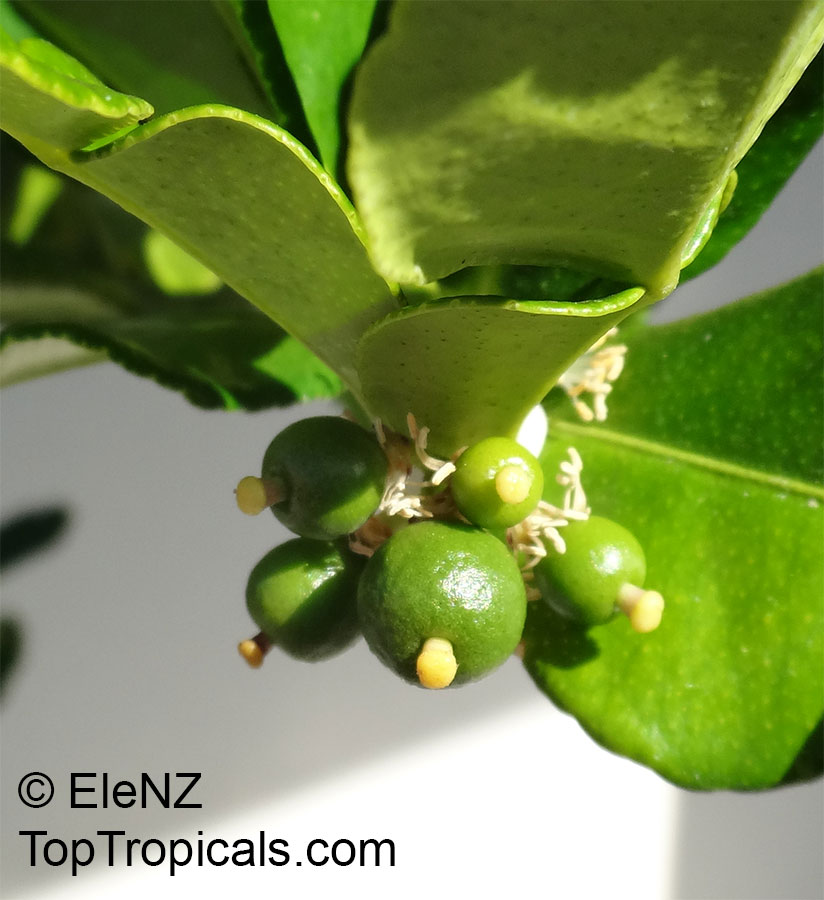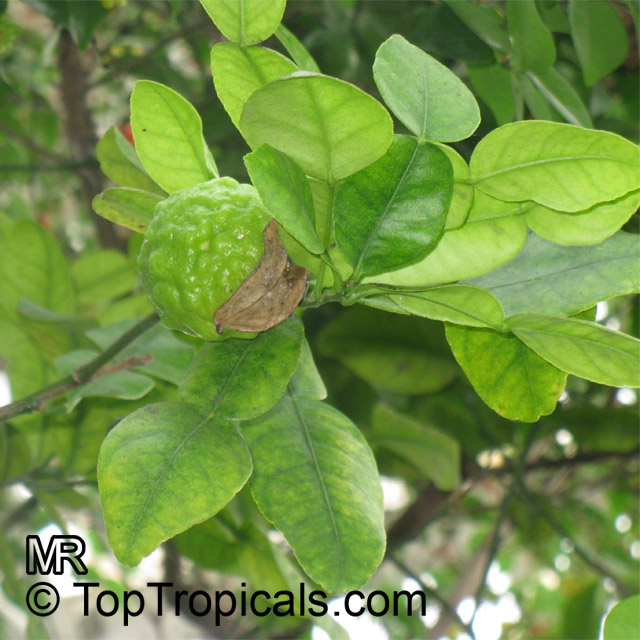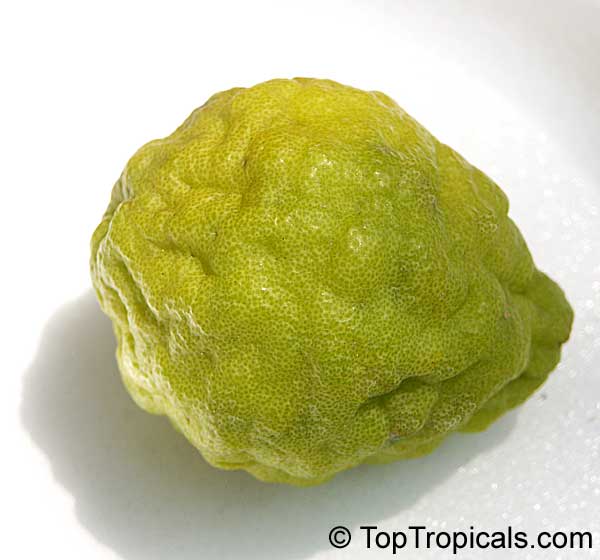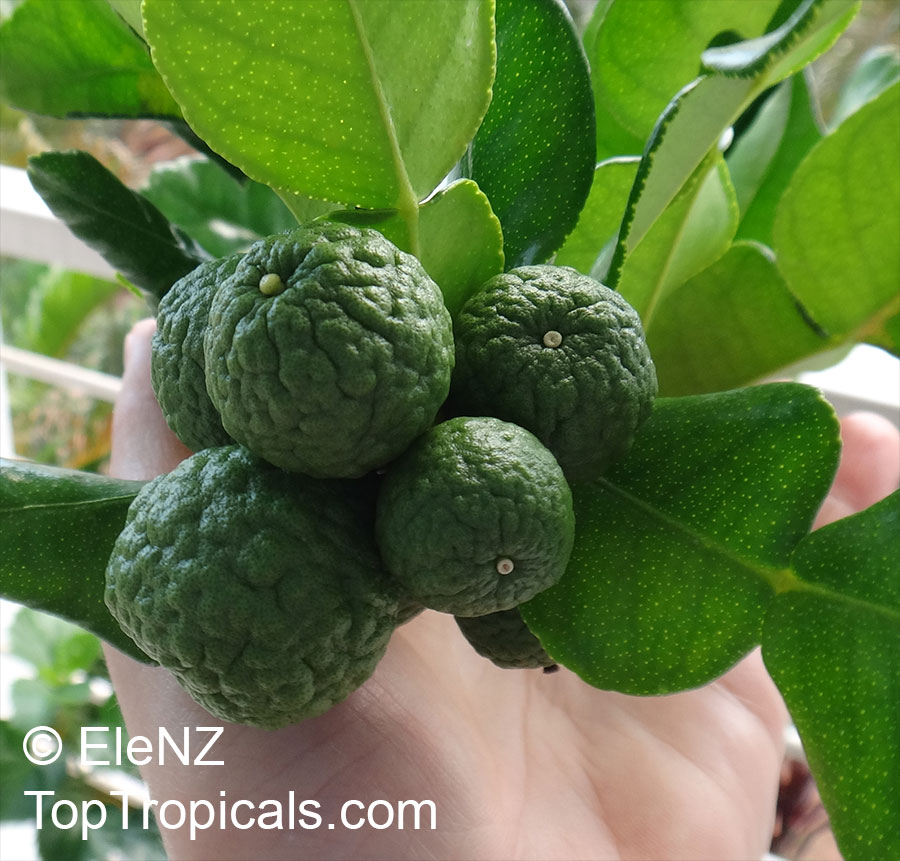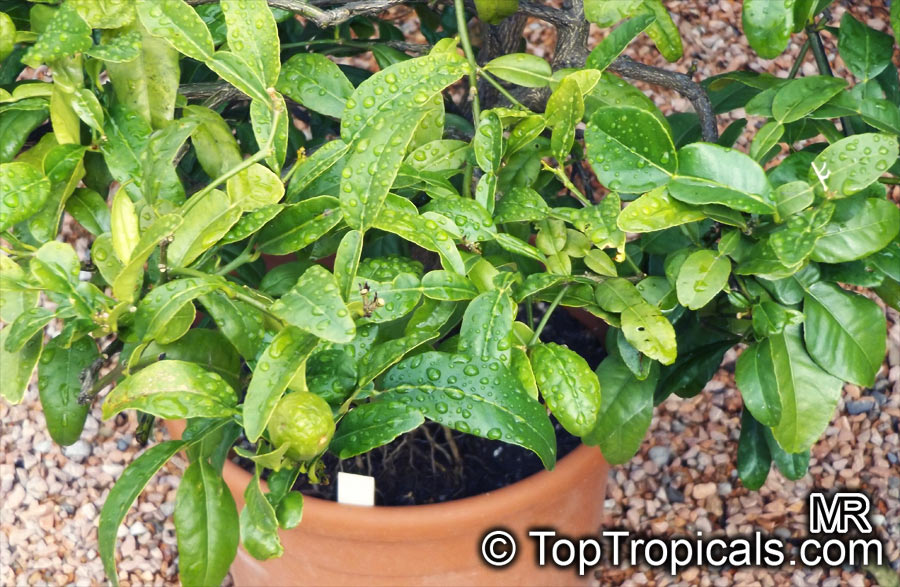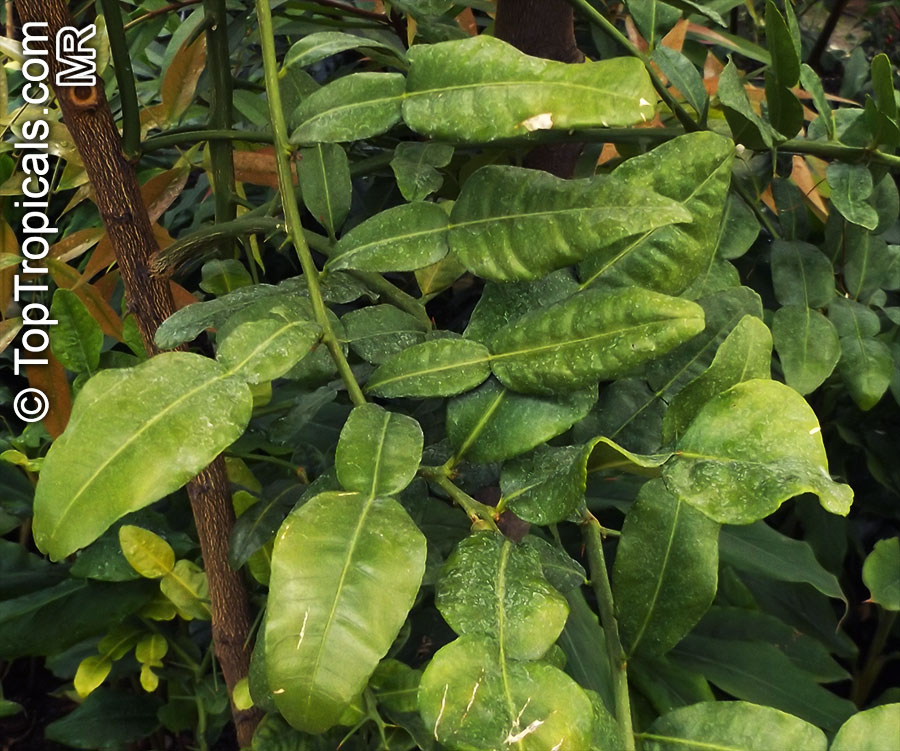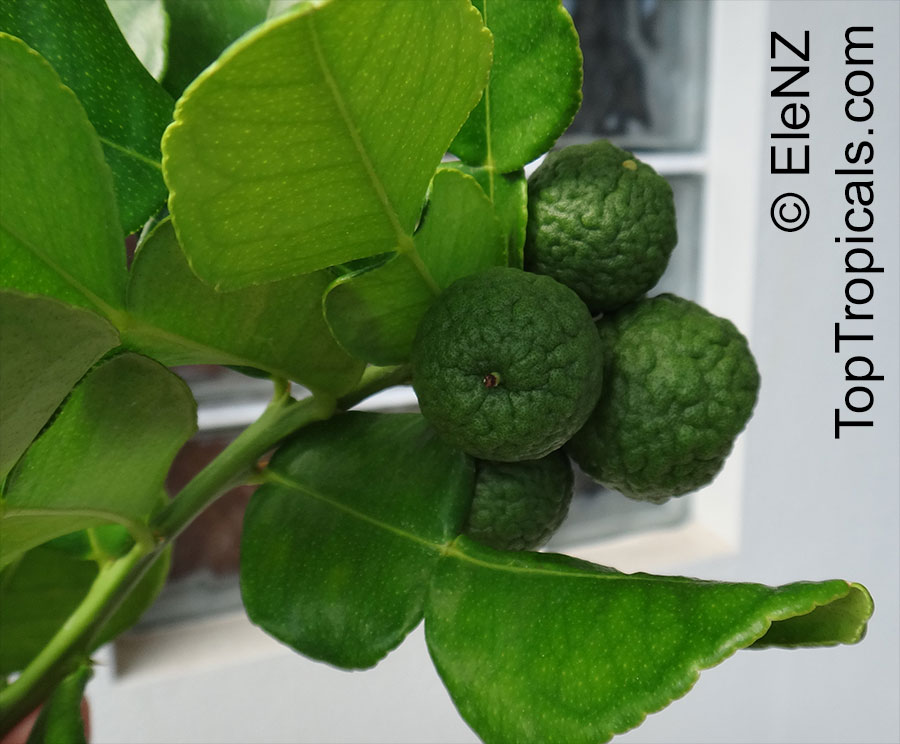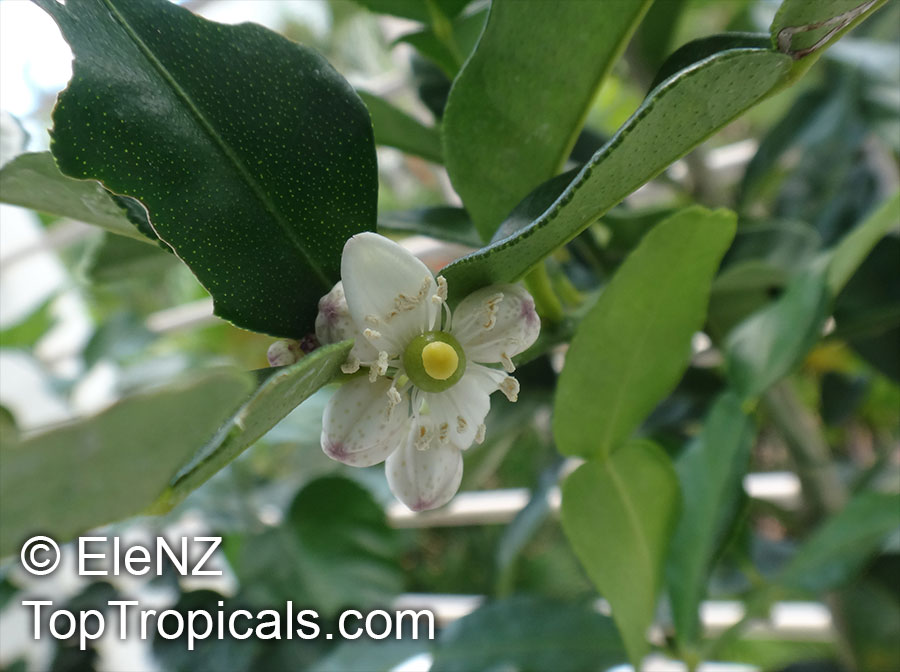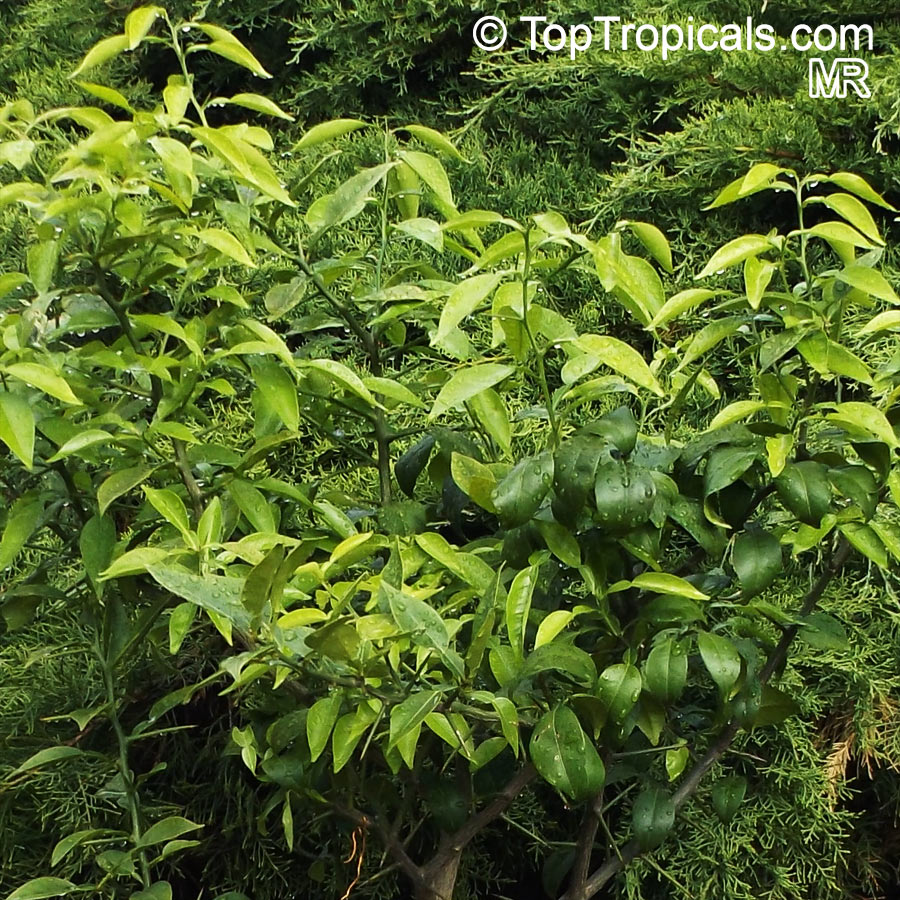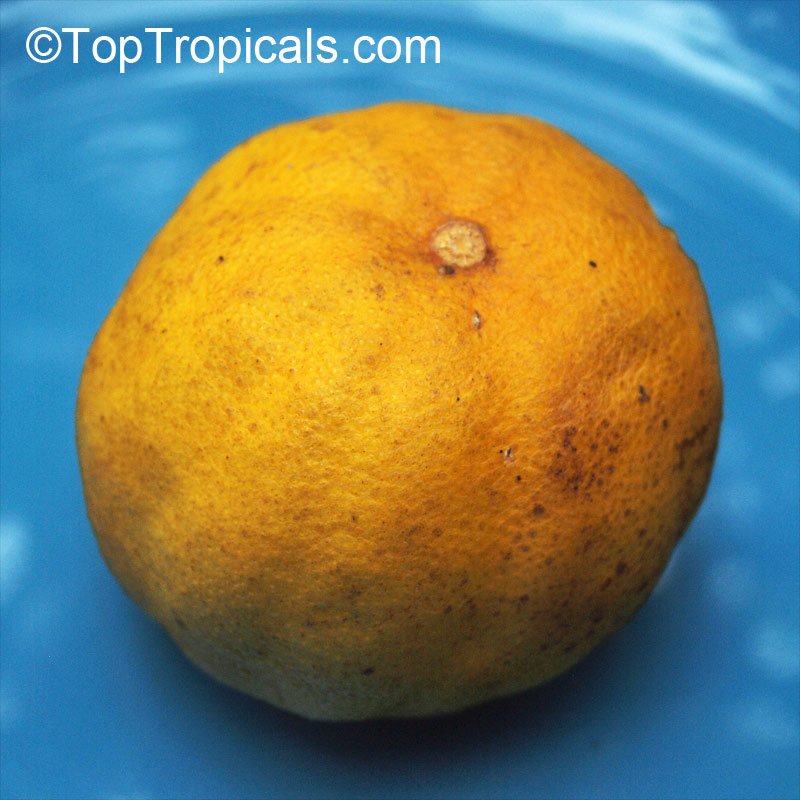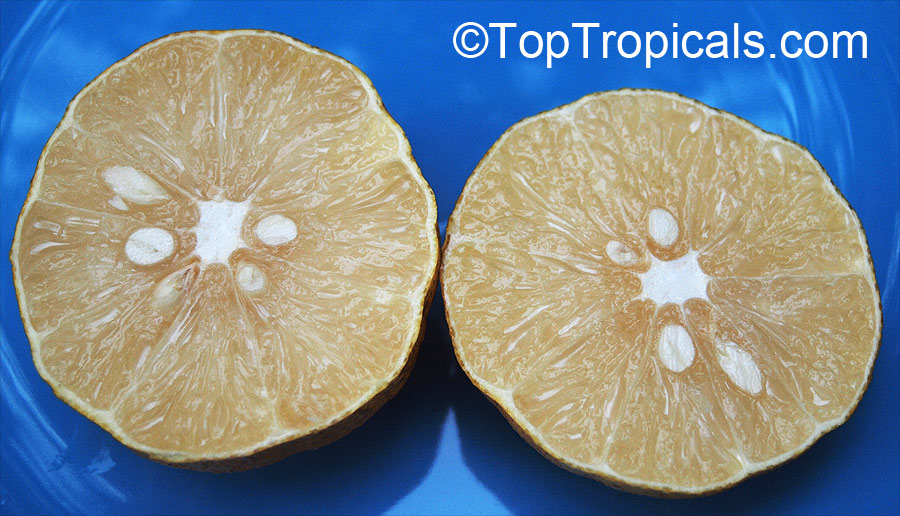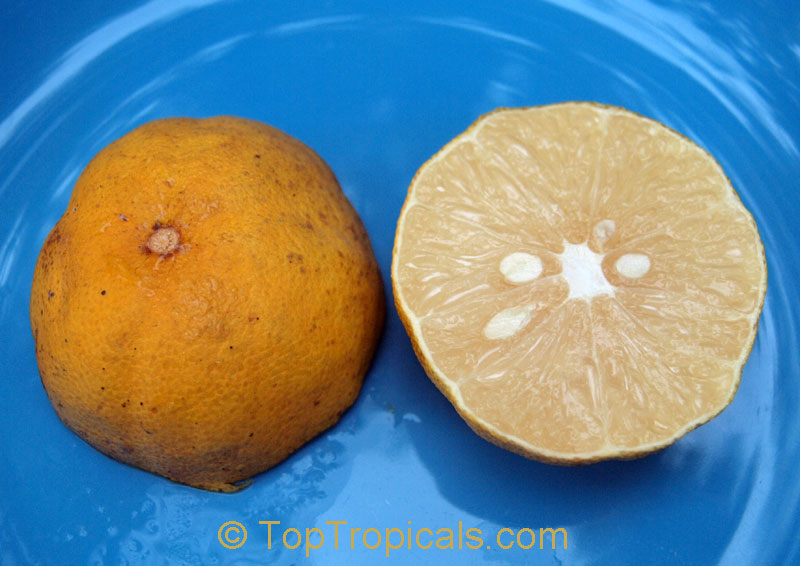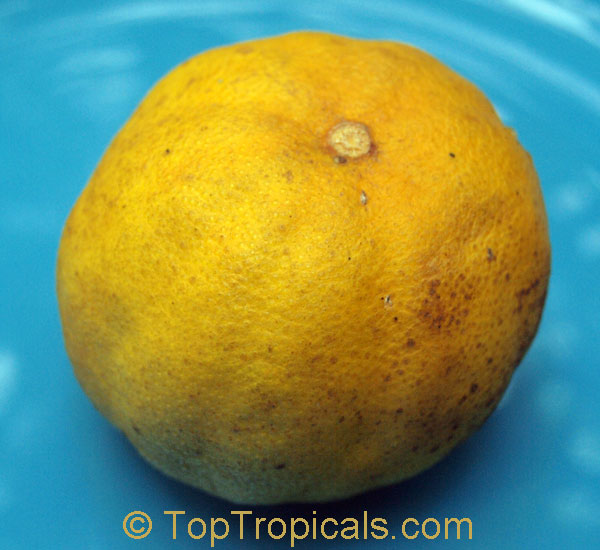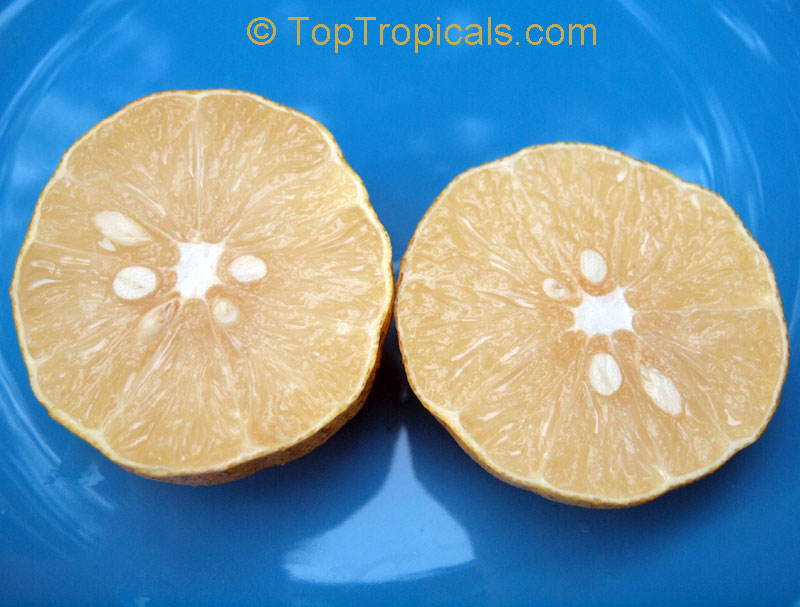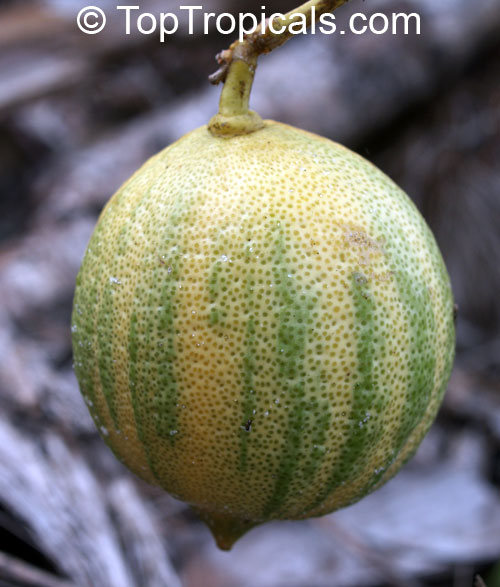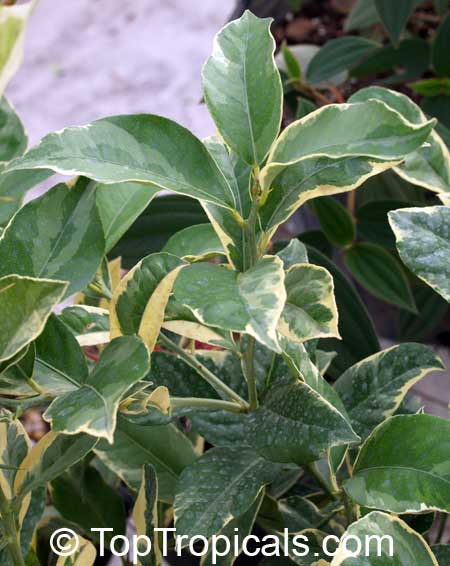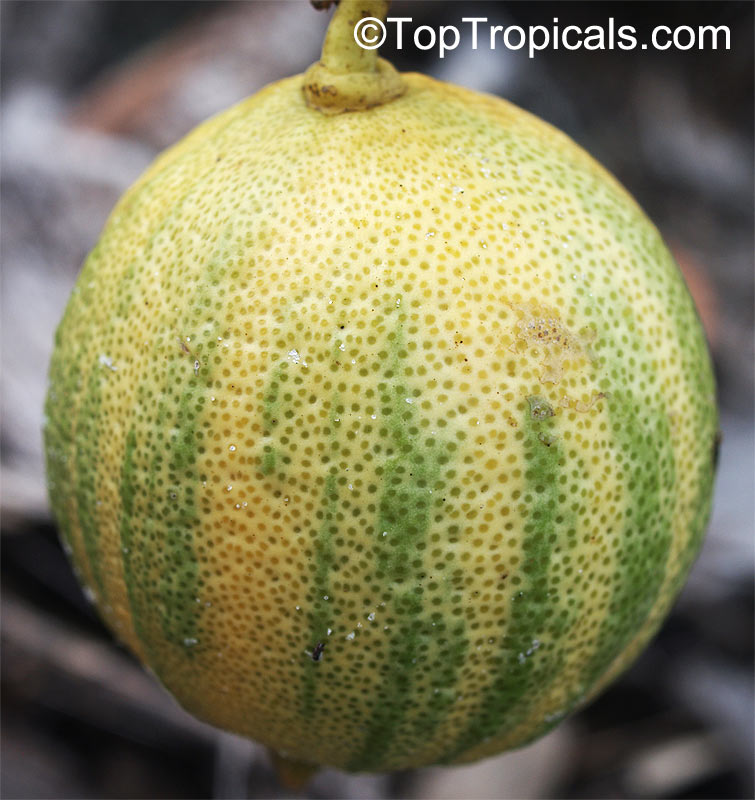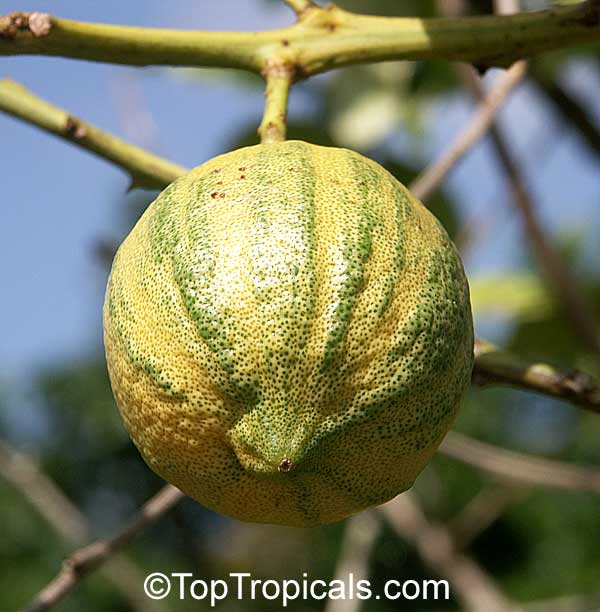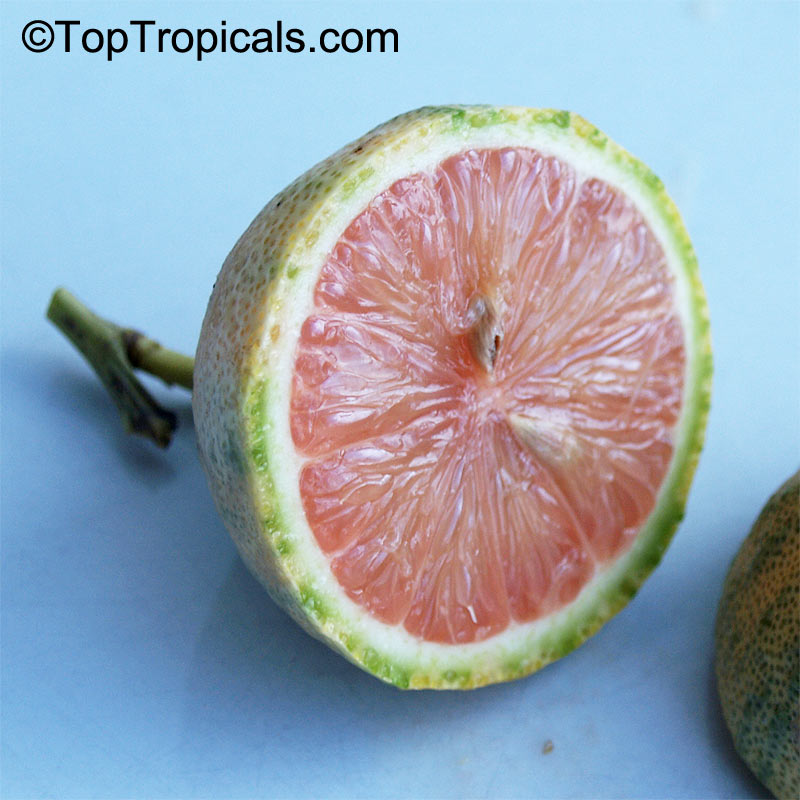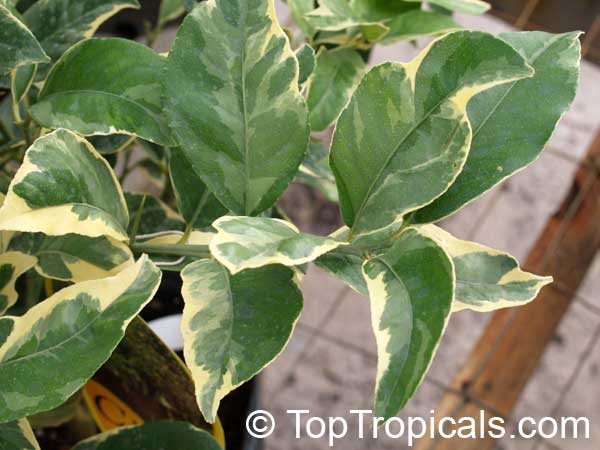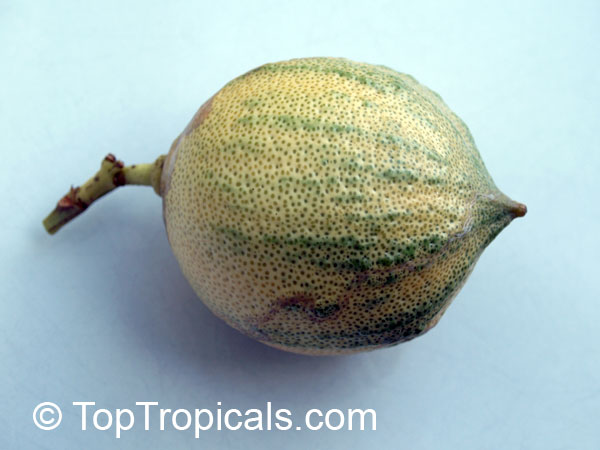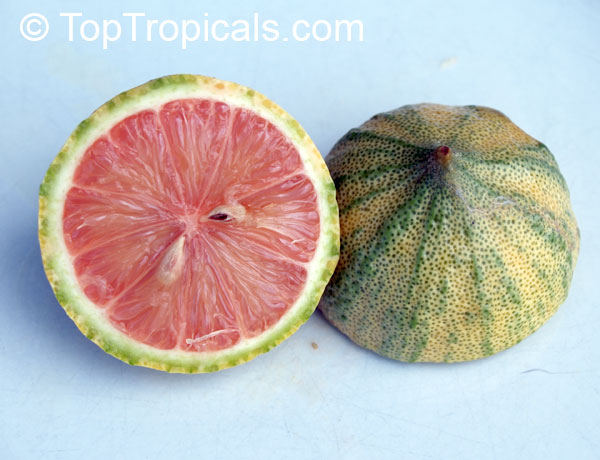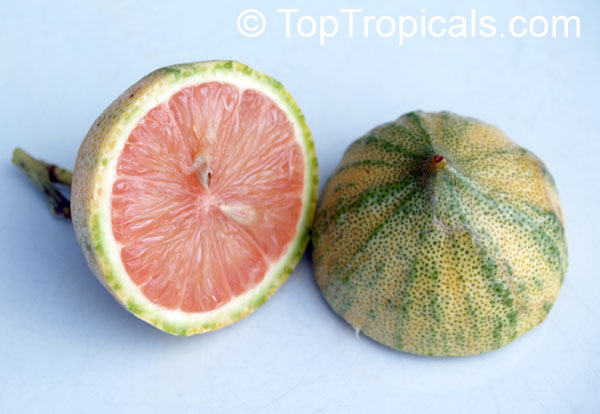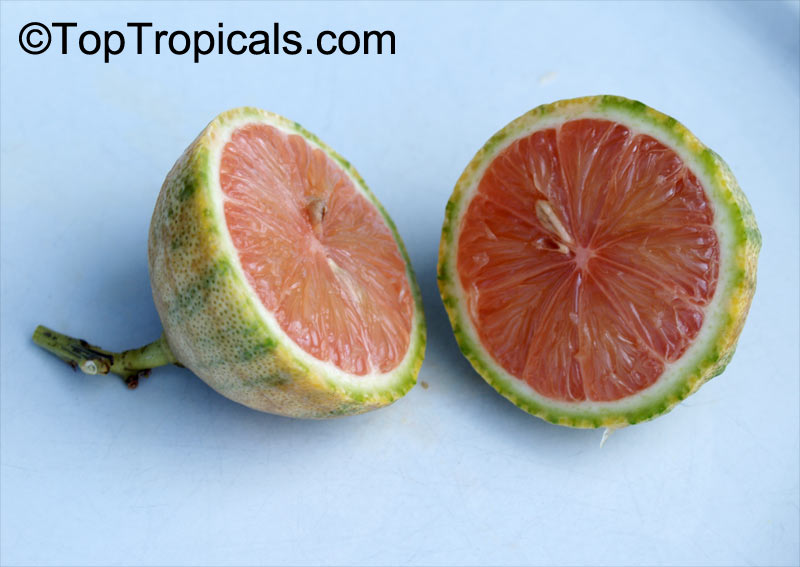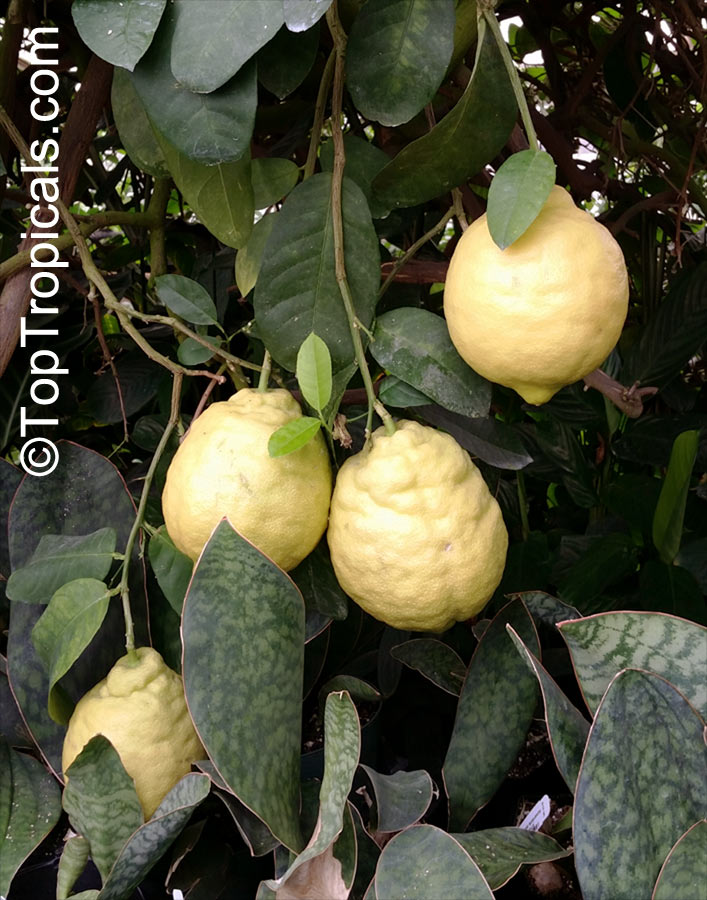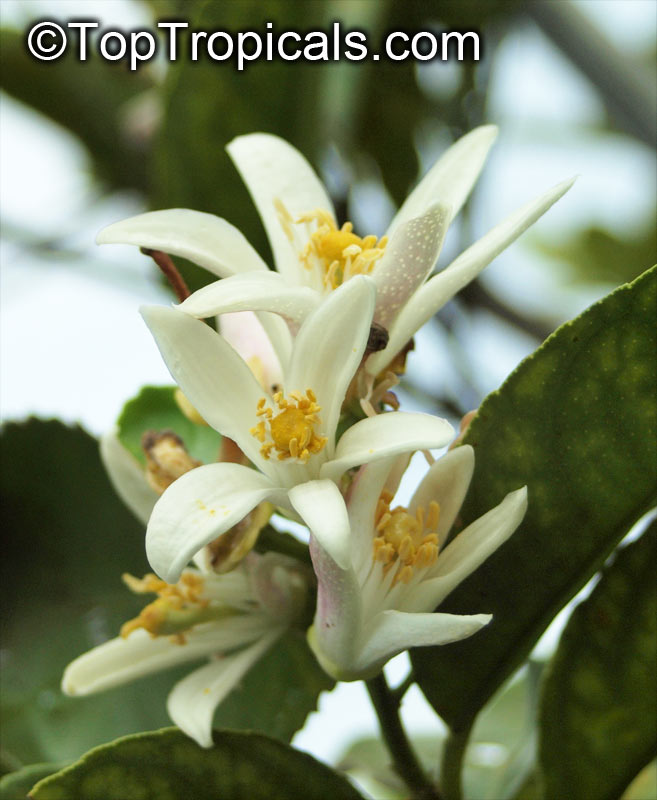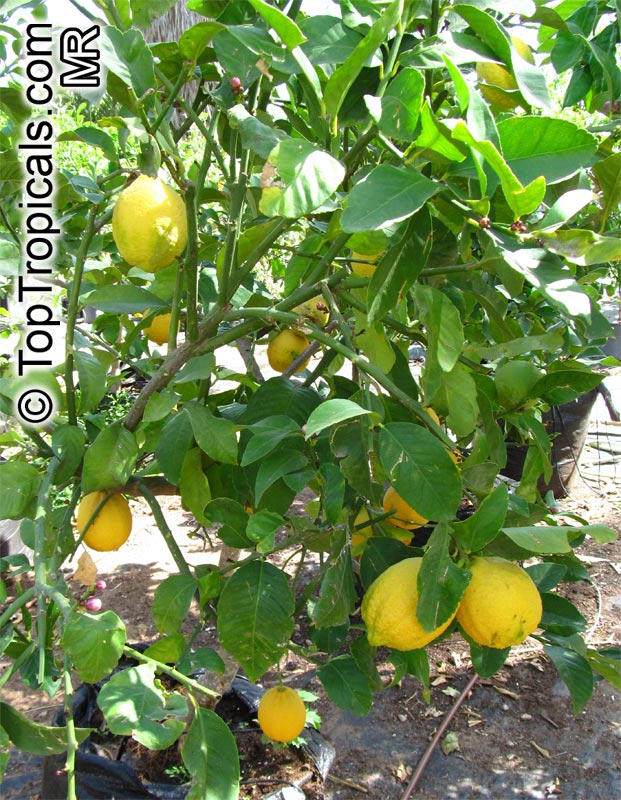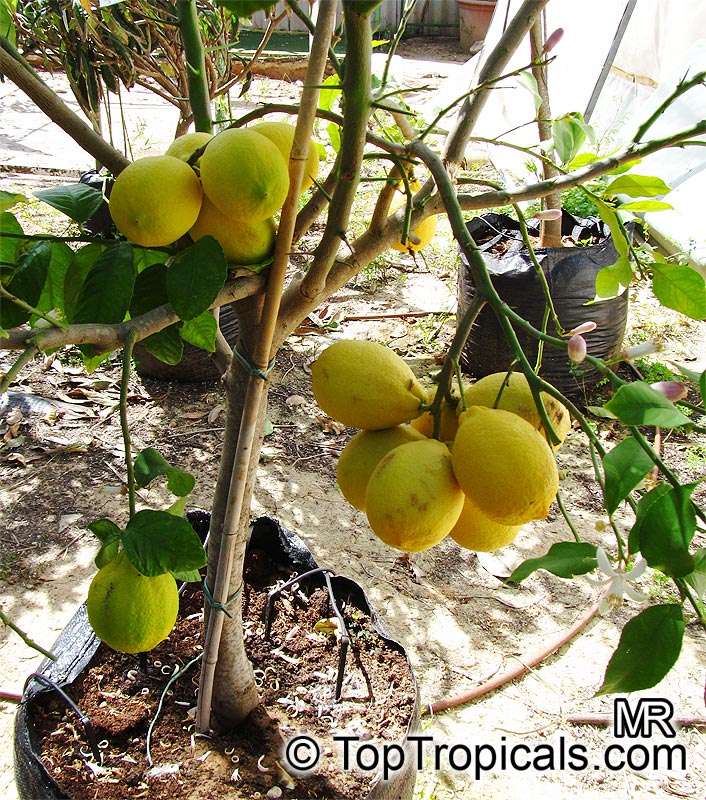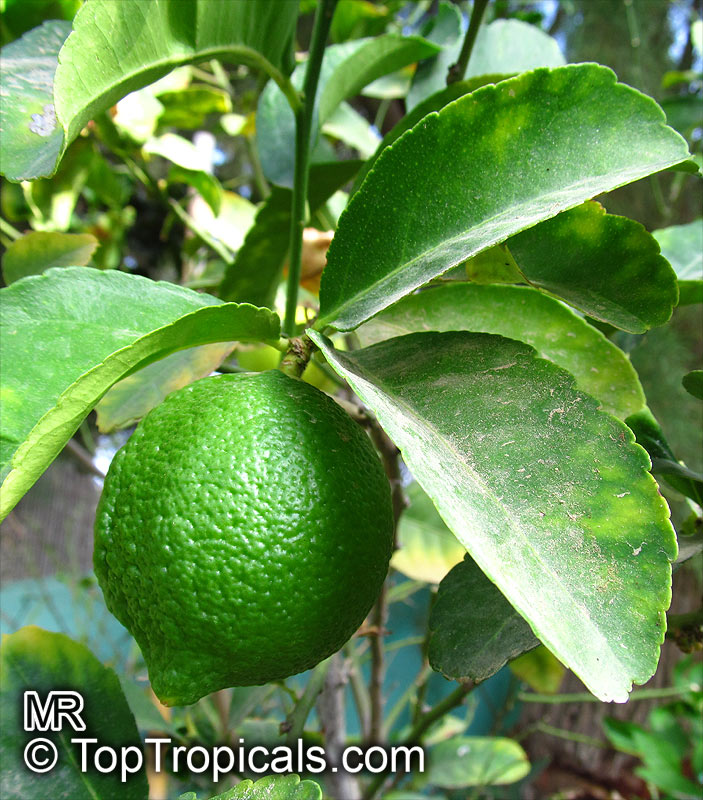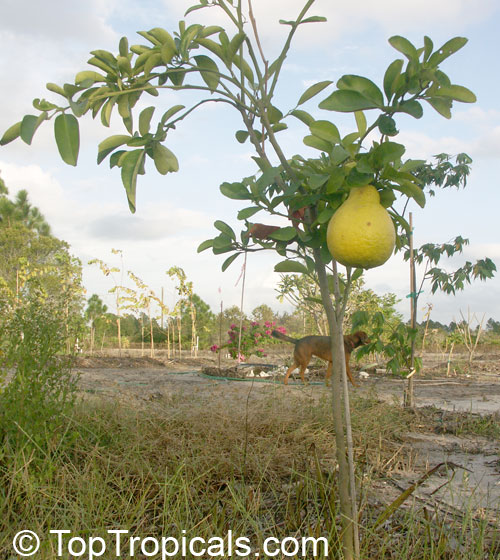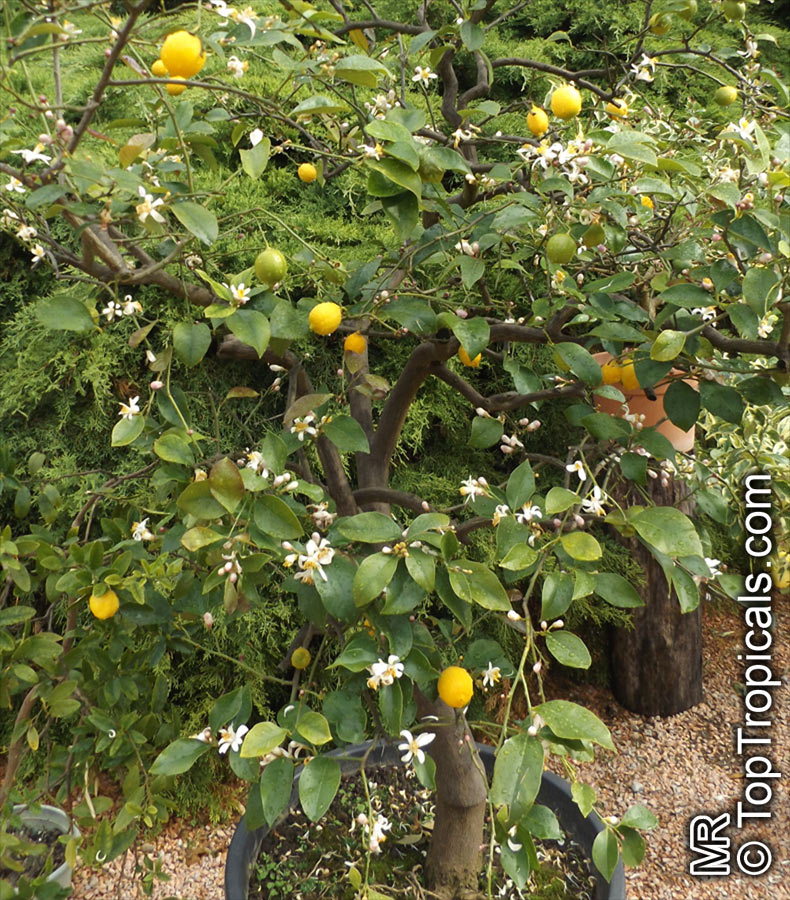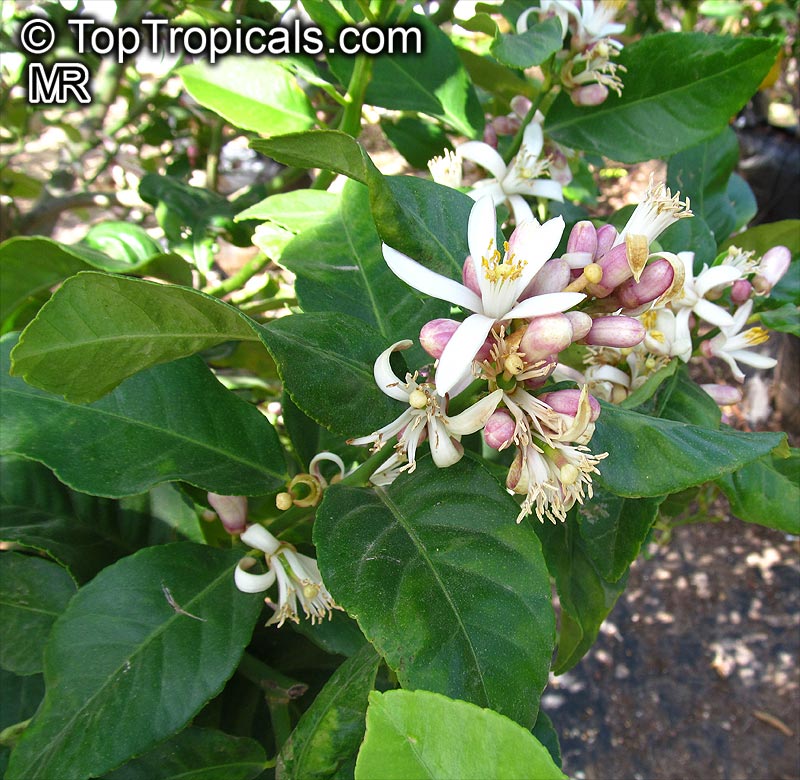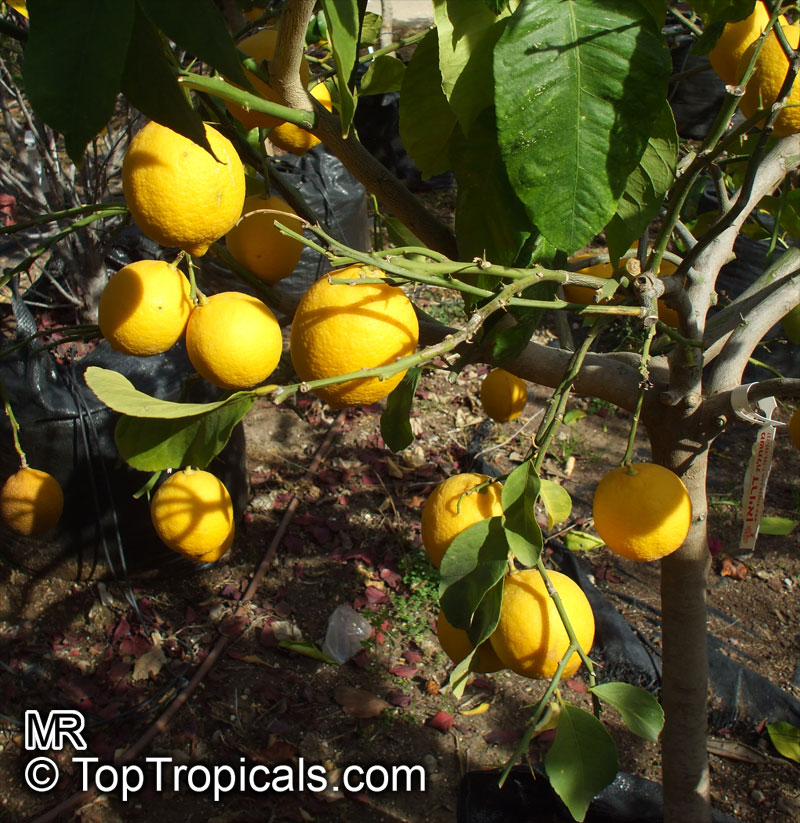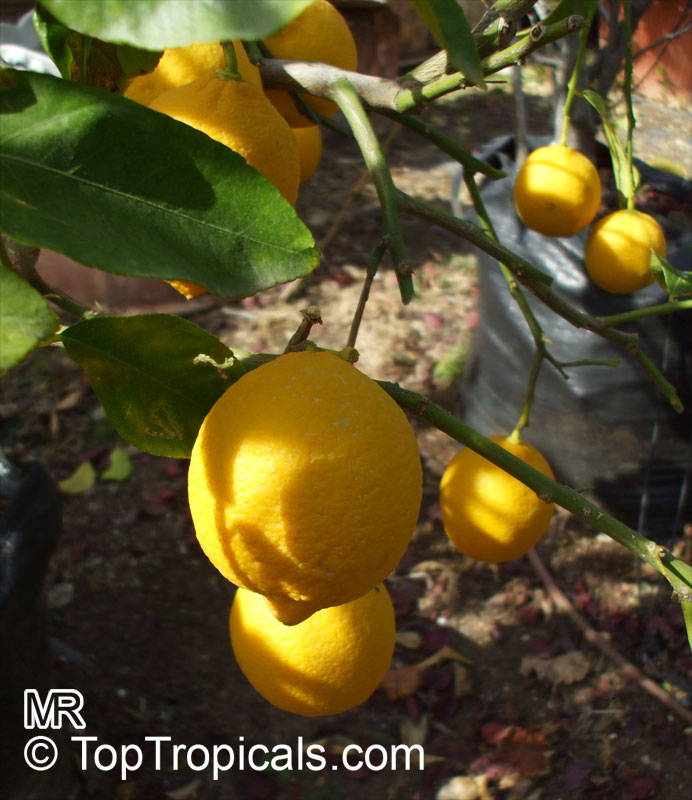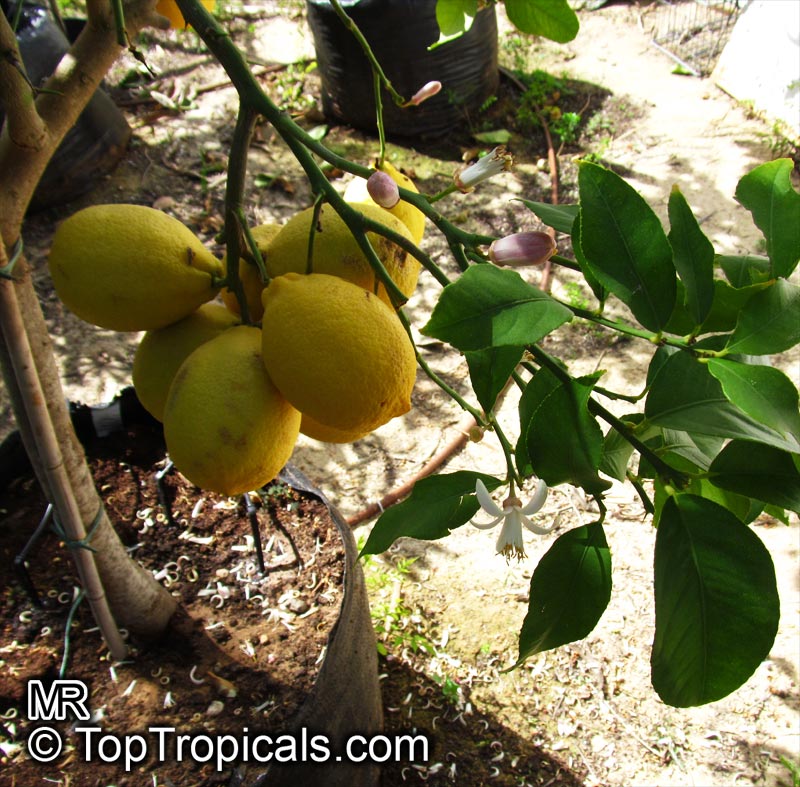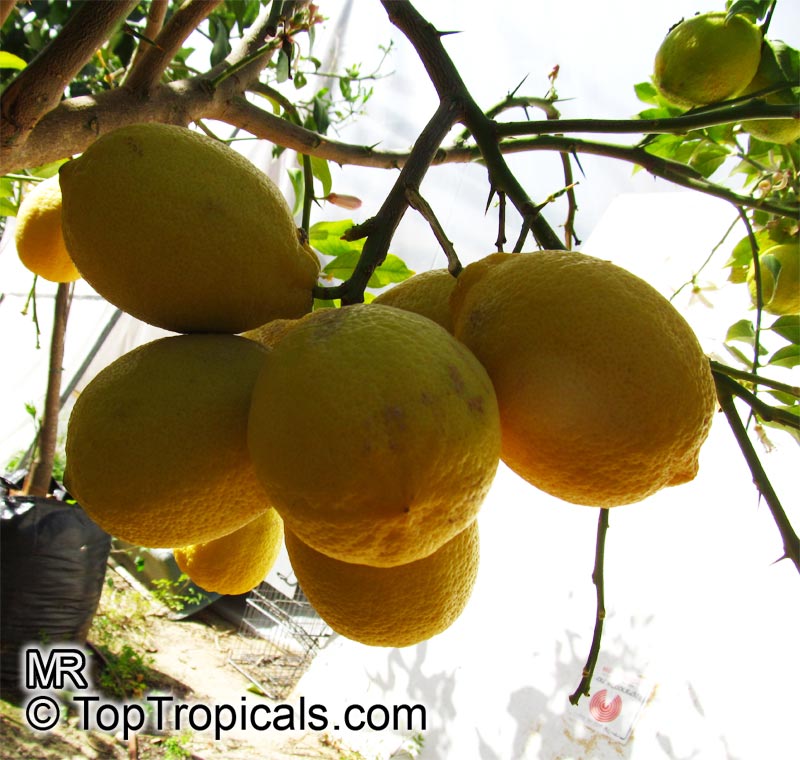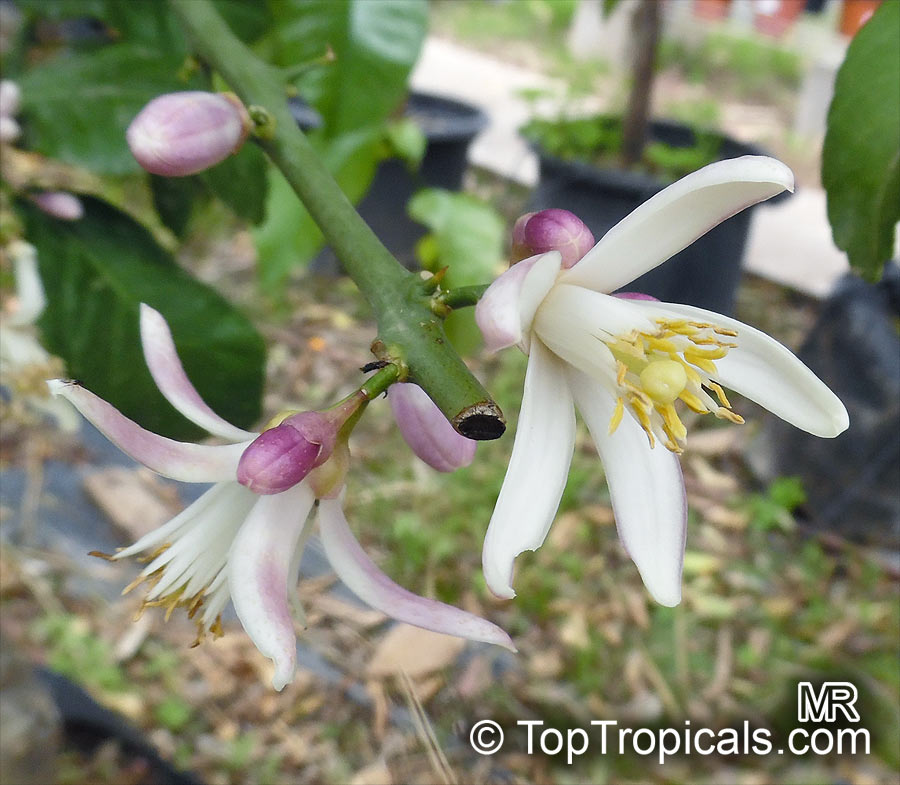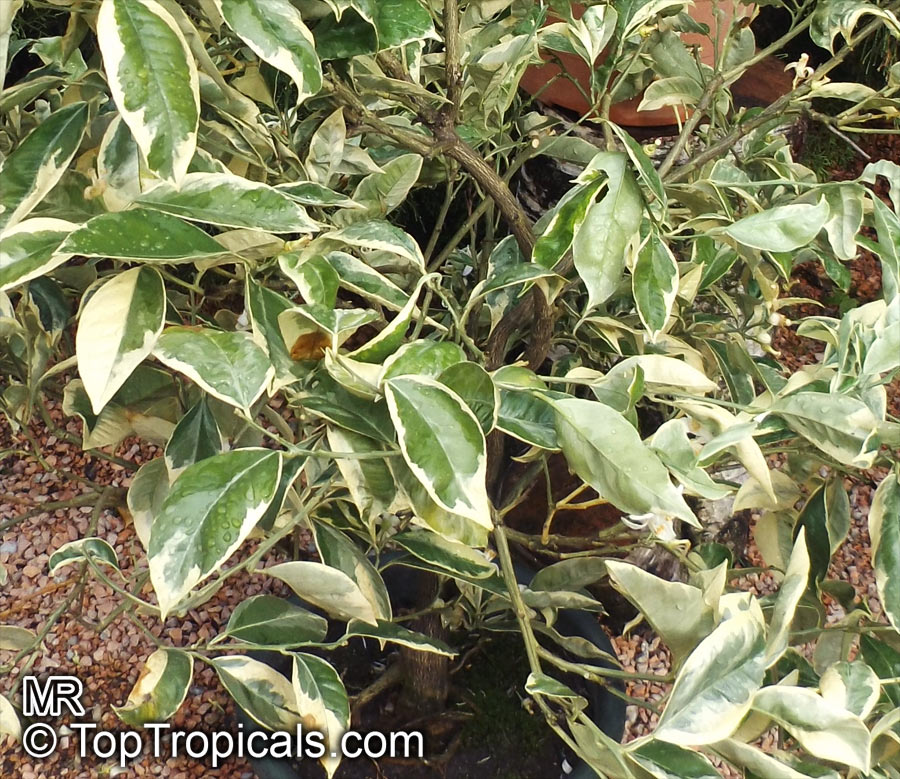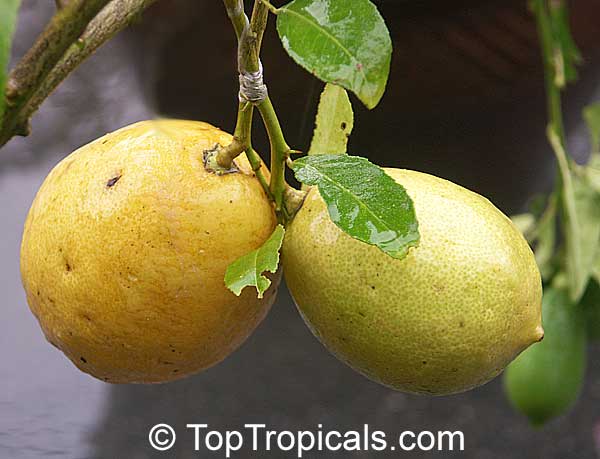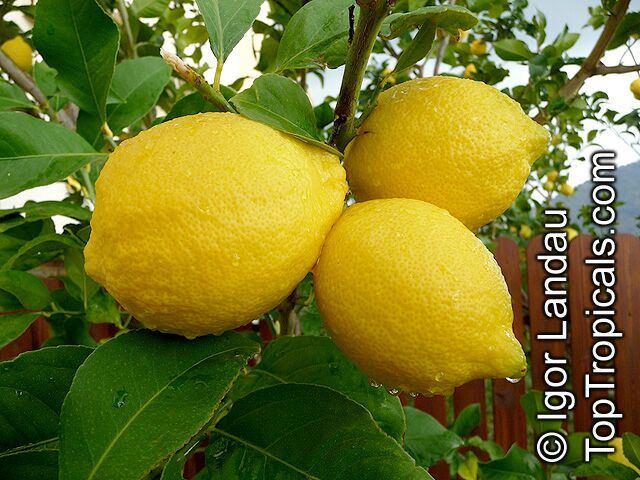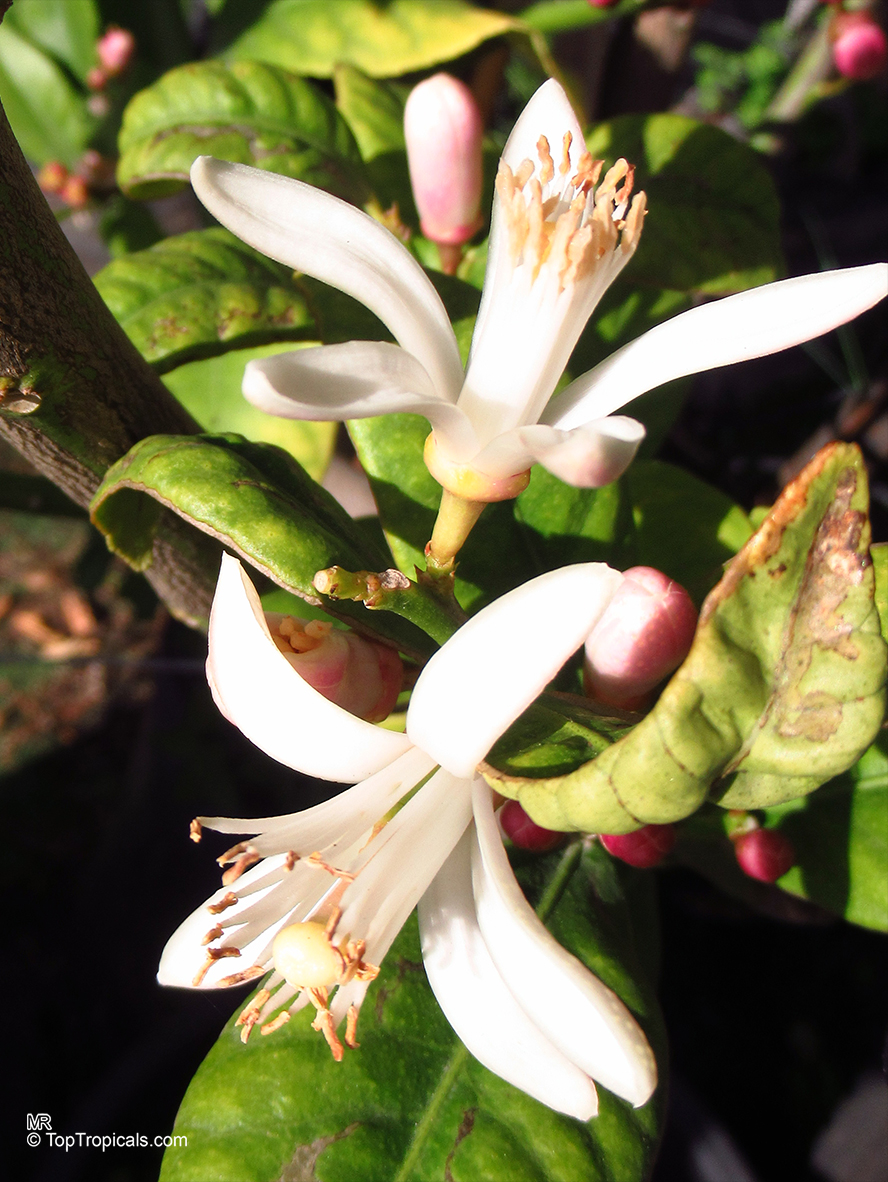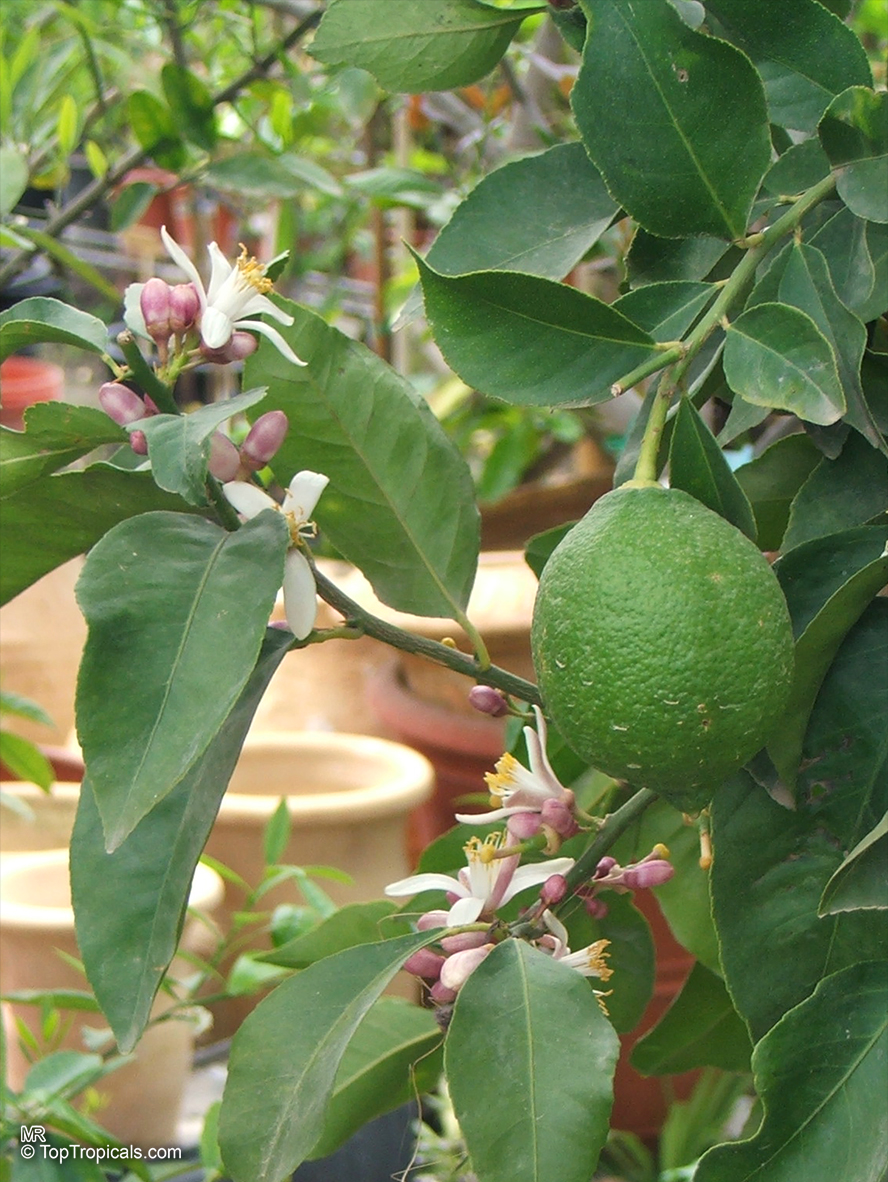Citrus - Plant Encyclopedia Results
Top Tropicals Plant Encyclopedia
| Number of plants found: 53 | Next | 
|
Go to page: | 1 | 2 | 3 | 4 | 5 | Last |
Botanical name: Citrus aurantifolia
Common names: Mexican Lime, Key lime, West Indian lime
Family: Rutaceae











It is a small tree, 10-20 ft. tall. This plant must have full sun to partial shade, with moderate water needs. It is cold hardy to at least 30sF for a short time. This plant has fragrant, off-white flowers that attract butterflies and hummingbirds. The fruit is edible and highly valued for its sourness. The fruit is round and can be green or yellow depending on when it is picked. It can produce up to four fruits in one season.
Citrus aurantifolia (Mexican Lime) has many useful properties. Its fruit has many healthy benefits, as it contains vitamin C, calcium and other minerals that are thought to prevent some types of cancer, as well as support strong bones, teeth, and skin. It is also used for its therapeutic properties, as it can be used to help with constipation, digestive problems, and infections. The juice is often used to enhance the flavor of food and drinks, and the essential oils are used in perfumes, cosmetics and soaps.
This small tree can be grown in USDA Zone 8-11, and prefers full sun to semi-shade. It does not need significant water beyond occasional deep-watering. The tree's spiny branches offer protection from animals and make it an appropriate choice for a hedgerow.
While fruit production is abundant in the warm months of May to September, the Mexican Lime is also known to be hardy in cold climates - surviving temperatures down to 30sF for a short time. C. aurantifolia can produce up to four fruits in a season. To get the best harvest, the plant needs to be regularly pruned, watered, and fertilized. The plant also needs to be protected from frost during the coldest months, which can be done using an insulating fabric, specifically designed for this kind of climate.
Botanical names: Citrus australasica, Microcitrus australasica
Common names: Finger Lime, Caviar Lime
Family: Rutaceae
Origin: Australia









Finger Lime trees are erect trees growing up to 30 ft. The fruits can be green and cylindrical in shape, up to 4" long and only about 1-1.5" in diameter.
Once the fruit is cut open the tiny round juice vesicles will slowly roll out of the fruit without squeezing, and resemble what is called 'citrus caviar'. Used in chutneys, jams, marmalades, savory sauces and refreshing drinks. In great demand for culinary use as it displays well as a garnish.
Botanical name: Citrus australis
Common name: Australian Lime
Family: Rutaceae
Origin: Australia









It is native to Australia and is a great choice for bonsai. Citrus australis or Australian Lime can reach a height up to 5 to 10 feet when grown as a shrub, and up to 10 to 20 feet if grown as a tree. It has a moderate growth rate and its leaves are dark green, opposite and ovate in shape. It prefers full sun to partial shade and demands regular watering, so it is important to make sure the chosen spot receives enough water.
Throughout spring the plant will start to flower with the most beautiful hues of pink and white, off-white. The flowers can measure up to 1/4 inch in length.
The fruit is edible and can be used as a substitute for lime in many recipes. It is round, green and contains a slightly acidic juice with a flavor similar to lime. The fruit can grow up to 1 inch and is usually ripe during summer time. It usually grows in clusters and a single Australian Lime tree can produce around 40-50 fruits each year. The fruit is high in vitamin C as well as other nutrients, making it a great health benefit addition to your diet.
Growing Citrus australis in pots is possible and recommended if you live in an area with cold winters as it is hardy in USDA zones 9-11. If planted in a pot make sure to use a deep and heavy one as the root of the plant tend to be rather invasive. When watering give enough water to the pot to make sure the soil is moist, but not soggy. If grown in a pot it might not produce fruit.
Botanical name: Citrus bergamia
Common name: Bergamot orange
Family: Rutaceae
Origin: South East Asia









Citrus bergamia, commonly known as the Bergamot orange, is a small evergreen tree that is native to South East Asia. The tree can grow up to 10-20ft in height and is recognized by its dark green, glossy leaves and fragrant off-white flowers. Bergamot oranges thrive in full sun and require regular watering, though they are tolerant of drought and occasional flooding. They are hardy in USDA Zones 9-11.
The edible fruit of the Bergamot orange tree is slightly sour and resembles an orange. It can be consumed raw or used to make jams, jellies, and presses. The fruit can also be processed to produce bergamot essential oil, which has numerous ethnomedical applications, including use as a spice or herb.
Bergamot oranges have many health benefits in addition to their culinary and medicinal uses. Research shows that they possess antioxidant and anti-inflammatory properties that promote cardiovascular and digestive health and may help reduce cholesterol levels. The essential oil derived from Bergamot oranges can promote relaxation and reduce stress, mild depression, and anxiety.
Bergamot oranges are relatively easy to grow in the appropriate climate and soil. When grown in a pot, they do best when placed in an area with direct sun and moderate watering. If grown in colder regions, they should be brought indoors during the winter months. The tree can produce hundreds of fruits each year depending on the care given. When provided with adequate sunlight, regular water, and proper soil, Citrus bergamia can live for over a decade.
Aside from its health benefits and culinary uses, the oil derived from Bergamot oranges is widely used in the perfume industry due to its refreshing scent. The oil possesses antiseptic, antibiotic, anti-inflammatory, carminative, relaxant, sedative, and uplifting properties.
Botanical name: Citrus hystrix
Common names: Indonesian lime, Wild lime, Kaffir Lime
Family: Rutaceae
Origin: South East Asia









Grown in USDA Zone 9-11, Citrus hystrix, commonly known as Indonesian limes, is a species of relatively small tree that can reach a height of 10-20 ft. The fruits of this tree contain very little juice, but it is packed with flavor that has a unique flavor profile. The off-white flowers of Indonesian lime are highly fragrant, making them a delight for the senses.
The fruits of this ethnomedical plant are edible, and their white skin can be used to make a refreshing beverage or used as as a spice or herb. There are many healthy benefits associated with consuming Indonesian limes. The vitamins C, A, and E are all found in the fruit, providing anti-oxidant properties as well as strengthening the immune system. The fruit is also packed with minerals including calcium, magnesium, and iron, all of which are vital for the body.
In terms of growing and caring for this tropical tree, they prefer full sun and require regular watering. In regions with colder climates, planting them in a pot and bringing them in during the winter months can help to keep them healthy and make sure they thrive. Indonesian limes are highly productive, often producing a yield of 25-50 fruits in a season.
All in all, Citrus hystrix is a great addition to any garden, boasting a plethora of health benefits and a unique flavor that adds complexity to prepared dishes. Its fragrant flowers make it a lovely ornament when placed in a sunny spot, and it is a worthwhile investment for the flavor and nutrition it provides.
Botanical name: Citrus junos
Common name: Yuzu
Family: Rutaceae
Origin: China










Citrus junos originated and grows wild in central China and Tibet. It was introduced to Japan and Korea during the Tang Dynasty and it is in these nations that it is cultivated most widely.
It is unusual among citrus plants in being relatively frost-hardy and can be grown in regions with winters at least as low as -9 C (15 F) where more sensitive citrus would not thrive.
The juice and rind and used in drinks and flavorings. Fragrance is extracted for use in perfumes, lotions, and soaps.
Botanical name: Citrus limetta
Common names: Sweet Lime, Sweet Lemon
Family: Rutaceae
Origin: Southeast Asia









Botanical name: Citrus limettioides
Common names: Indian Sweet Lime, Palestinian Lime, Lima Dulce, Pinata Lime
Family: Rutaceae
Origin: India








Sweet limes, Lima Dulce, are a hybrid variety whose parentage has been linked to key limes and a citron variety. Sweet limes are rounded with conical indented ends. Their rind is lemon yellow at maturity, thin, and semi smooth with prominent oil glands which makes them very aromatic. Their flesh is translucent yellow, tender, and very juicy, though it lacks any substantial levels of citric acid, thus the flavor is sweet with an insipid finish.
Sweet limes are native to India where they are grown commercially. They are also a commercially grown citrus in Egypt, the Near East and Latin America. Sweet lime trees are also used as rootstock, even though their rootstock is prone to disease. Sweet limes have very little presence in American horticulture outside of ornamental use and as a garden tree. In California the climatic influences create dramatically different sized and shaped sweet lime fruits from coastal to desert regions. Most sweet limes can be found at farmers market and at Latin American markets.
Sweet limes bear fruit in the winter months.
Botanical name: Citrus limon
Common name: Pink Lemonade Lemon
Cultivar: Pink
Family: Rutaceae









Citrus limon Pink (Pink Lemonade Lemon) is an ornamental and edible everbearing tree. Growing up to 10-20 feet tall, it is an attractive tree with purple-tipped new shoots growing from the top. The tree can thrive in full sun or semi-shade and requires moderate water. White to off-white colored flowers blossom every spring, attracting butterflies and hummingbirds to the garden.
These blooms are followed by the edible fruit. The fruits are usually green with yellow stripes, but have a pink interior, a delightful surprise for those enjoying them. They have a higher sugar content than regular lemons, making them perfect for drinks, desserts and lemonade. In addition to being flavorful and fragrant, the fruit is also rich in nutrients and has been used in traditional ethnomedical treatments.
Citrus limon Pink is a hardy tree. It can be grown in USDA Zones 9-11, though with extreme care it can be grown in colder regions in containers or movable pots. Here, the tree must be brought indoors or sheltered in winter and provided with plenty of light and water during the growing season. When grown outdoors the lemon tree should be provided with an organic-rich soil, watered regularly and pruned when necessary.
Because of its high vitamin C content, health benefits of Citrus limon Pink include boosting the immune system. Other nutrients found in the fruit also aid in digestion, energy production and bone health. Its versatile flavor can also be used in cooking to bring out the flavors of fish, poultry, and vegetables.
Citrus limon Pink is an attractive, fragrant tree that is easy to care for and produces delicious, nutritious fruit. With its hardy nature, it can be grown in many climates, and its beautiful flowers and delicious fruits will reward your efforts with beauty and flavor.
Botanical name: Citrus limon
Common name: Lemon
Family: Rutaceae
Origin: Northwestern India








Citrus limon, native to Northwestern India, is a large shrub or small tree, 5-10 feet tall, in full sun with regular water. The white or off-white flowers are fragrant, and the mature plant is cold hardy to temperatures at least as low as the 30s F for a brief period. Citrus limon is grown best in USDA Hardiness Zones 9-11.
It is an ethnomedical plant, used throughout time for many medical properties such as its antiseptic, antispasmodic, and anti-rheumatic qualities. Additionally, lemon is edible and has many culinary uses. The fruit is rich in vitamin C, vitamins B1, B2, B3, B5, B6, E, iron, magnesium, phosphorus, potassium, and fiber.
Citrus limon does best in a pot in colder regions. Potted lemon trees should be kept in an area with the most available sunlight and watered regularly. Plant the lemon tree in rich, well-draining soil in a pot with drainage and ensure that the pot is large enough for a few years of growth. Give it regular fertilizer along with plenty of water during the growing season. Protect the lemon tree from frost to ensure success and when temperatures reach freezing, move the tree indoors or provide frost protection.
| Next |  |
Use link to repeat this search:
https://toptropicals.com/cgi-bin/garden_catalog/cat.cgi?find=citrus&search_op=and&keyword_op=and&language=e&number=10
&no_change_lang=1&user=tt&sale=1&first=0
